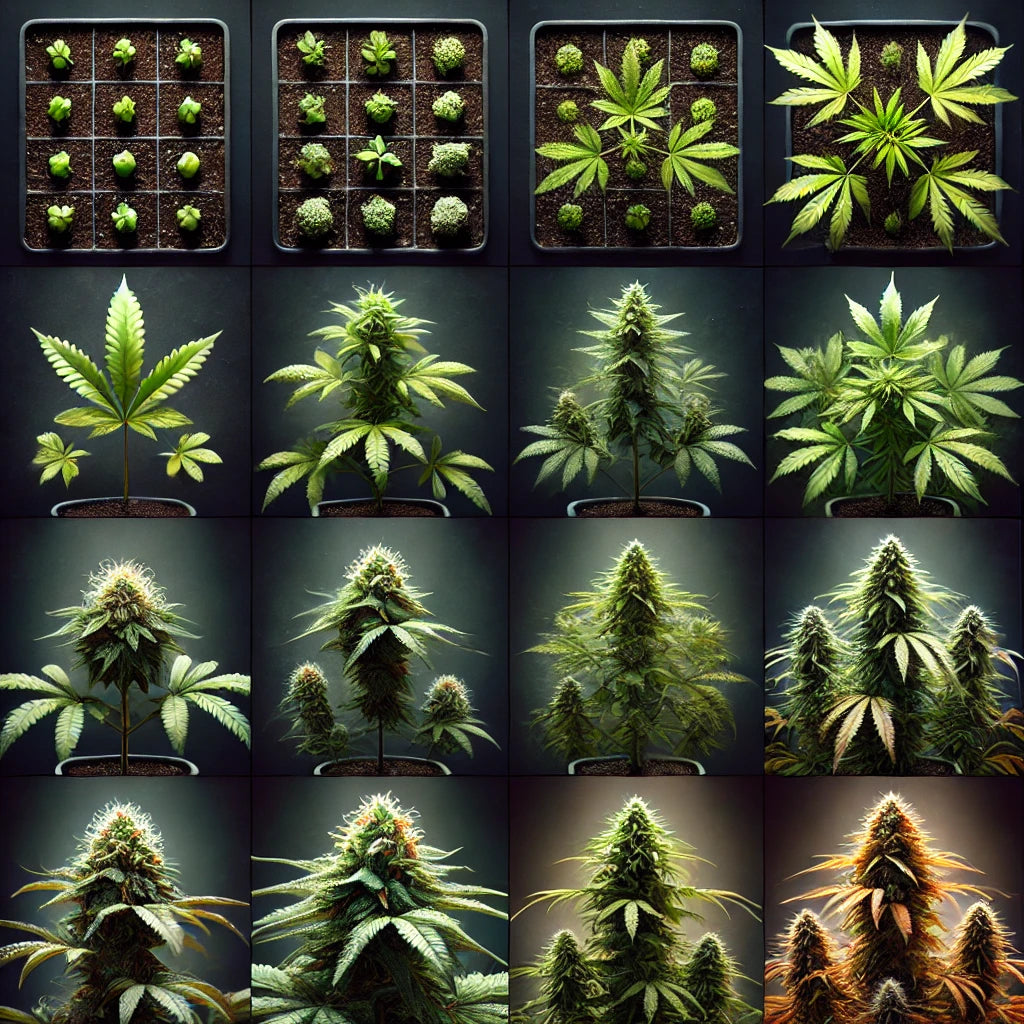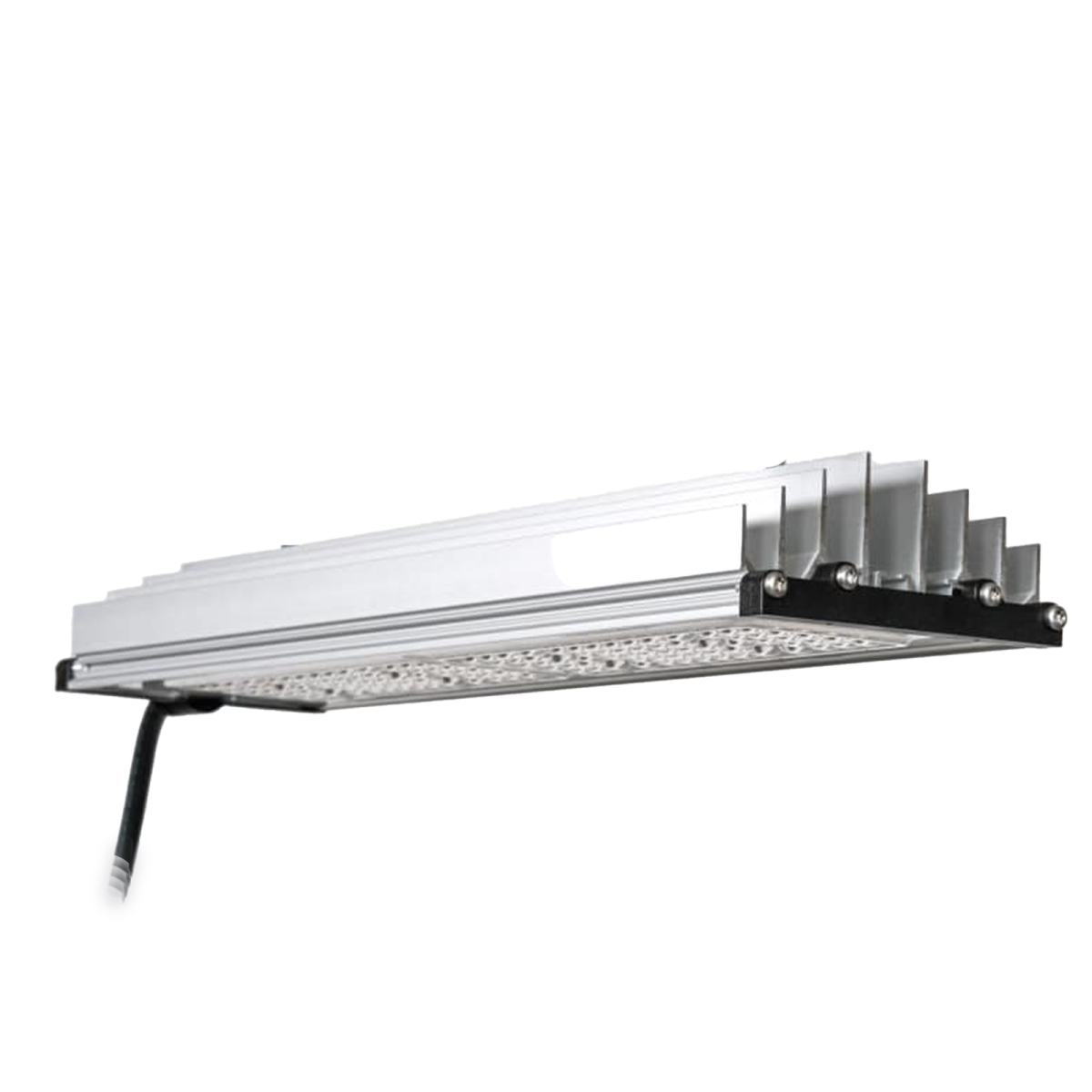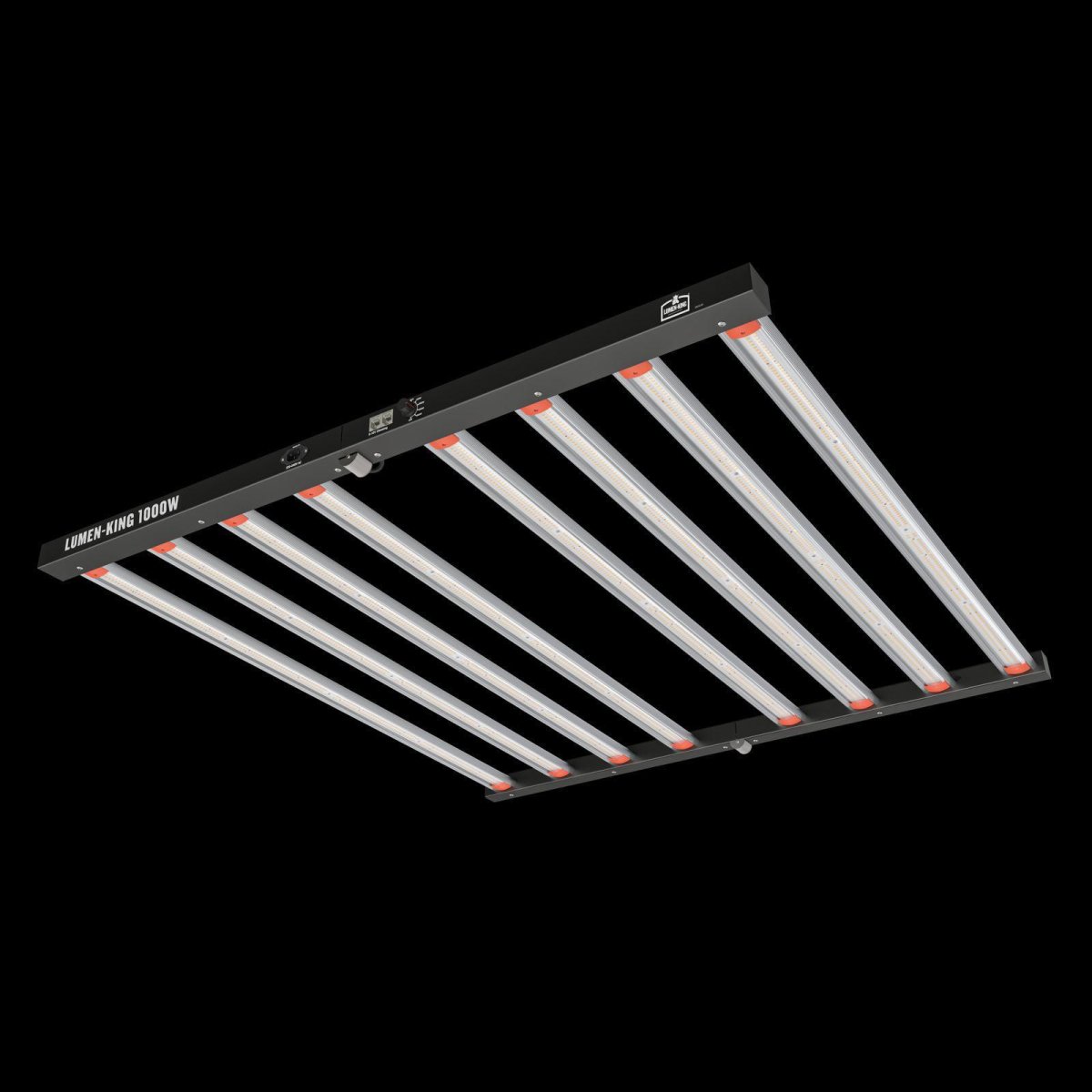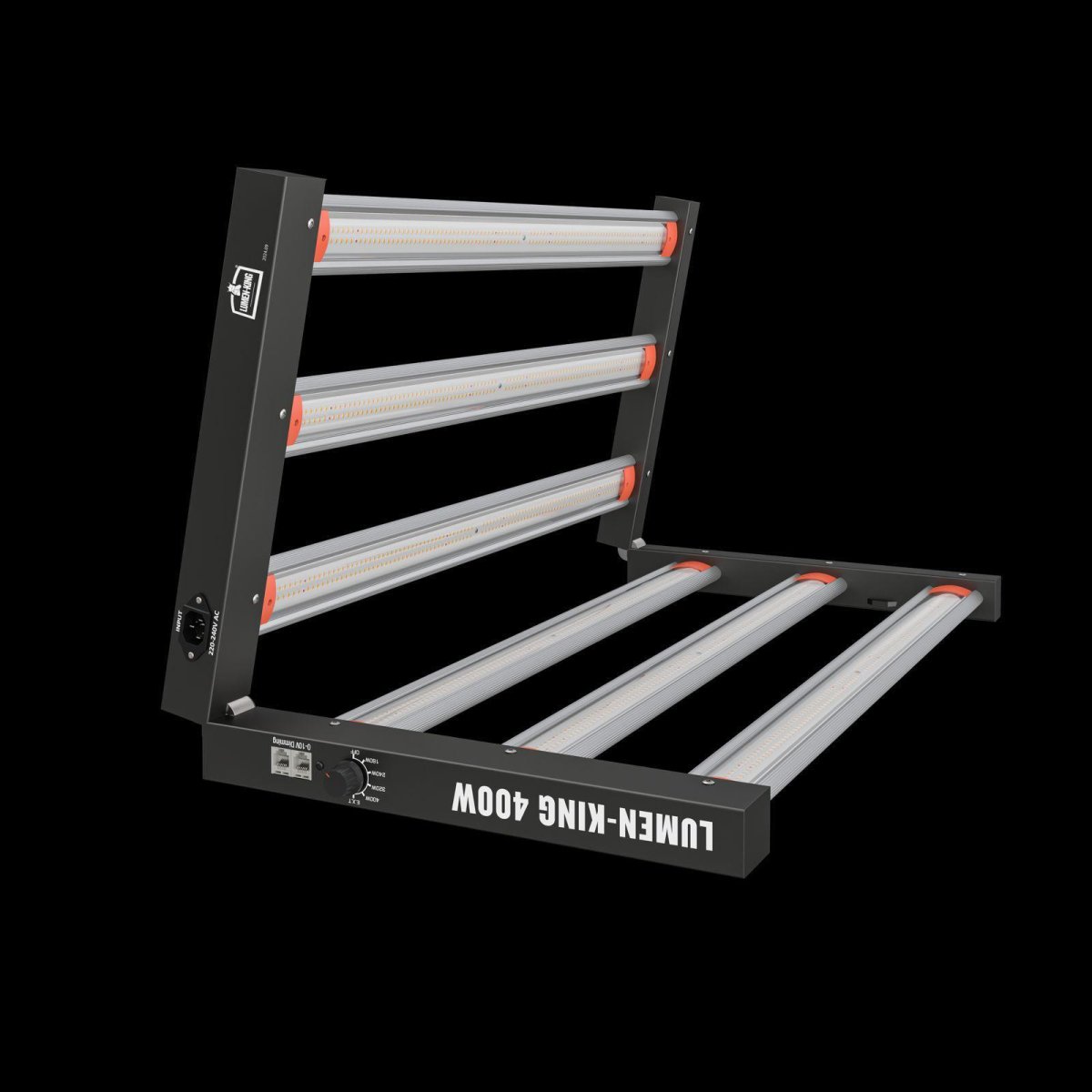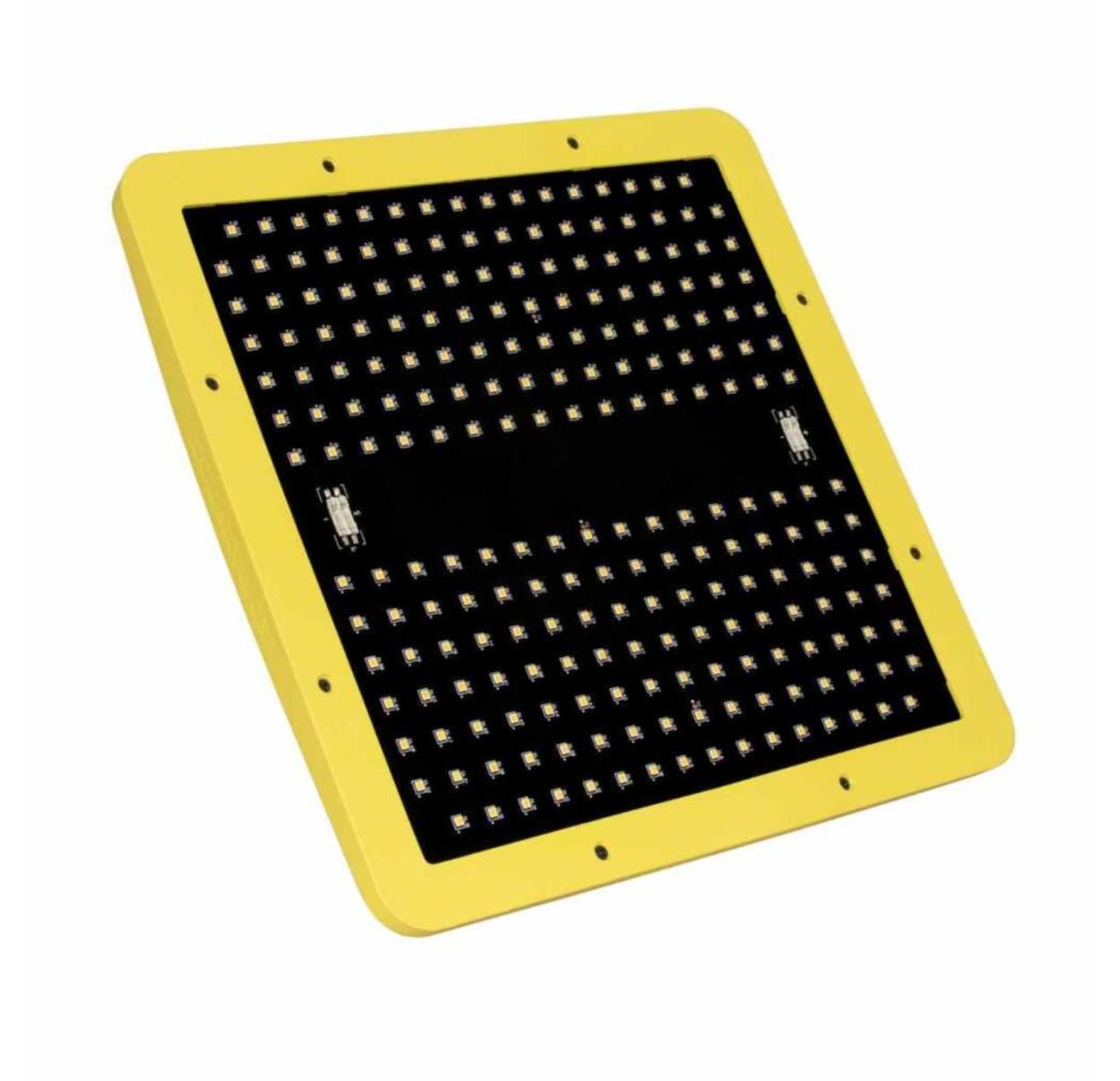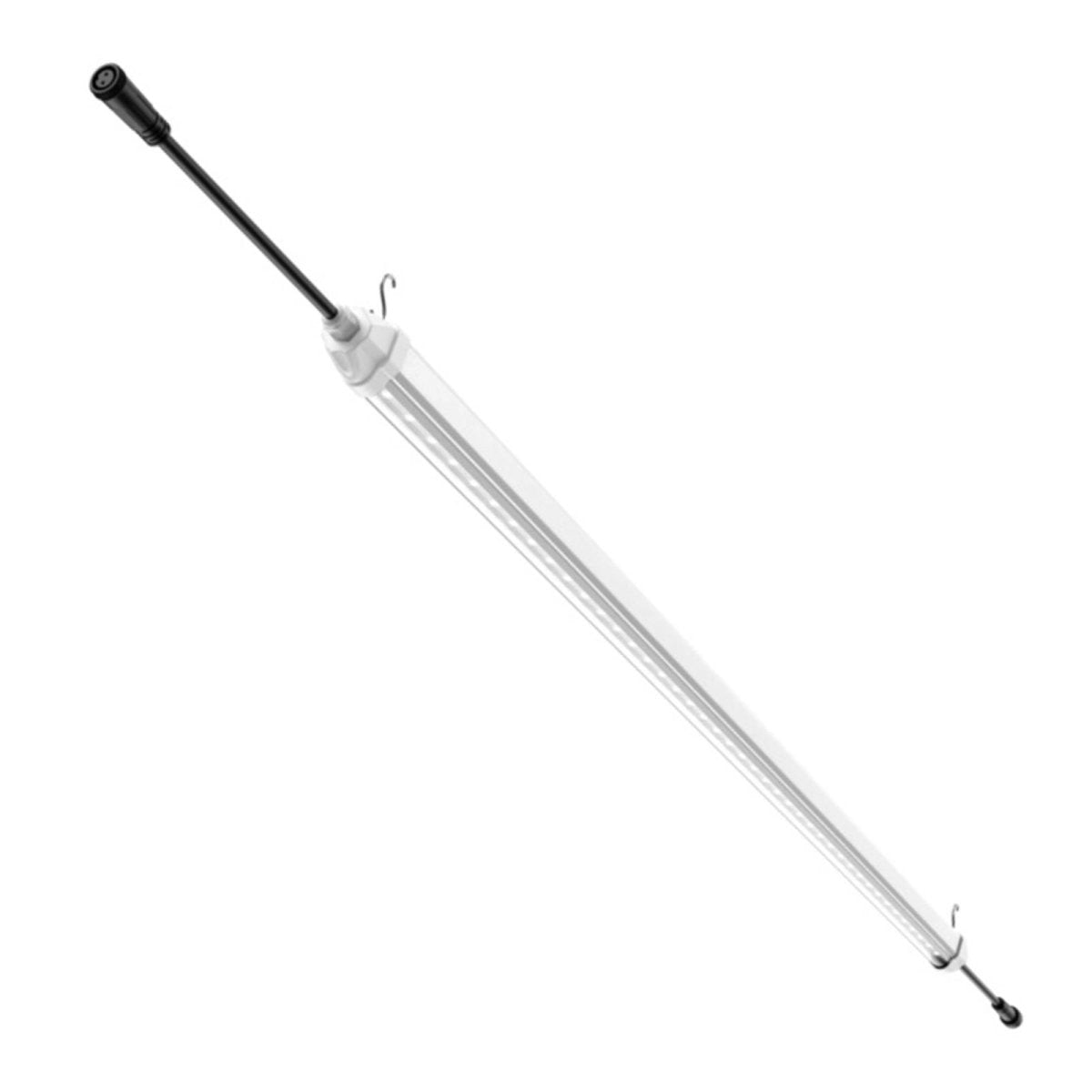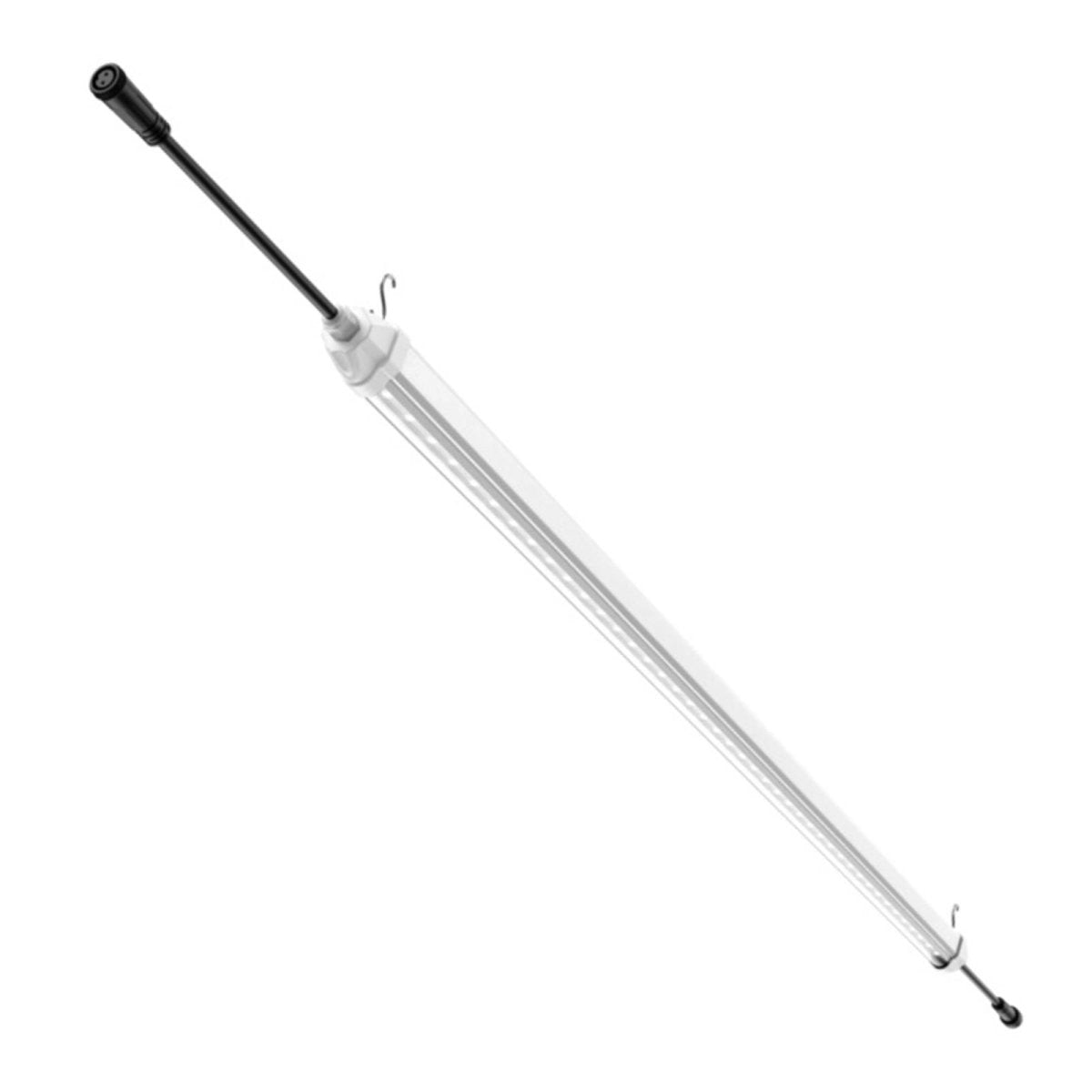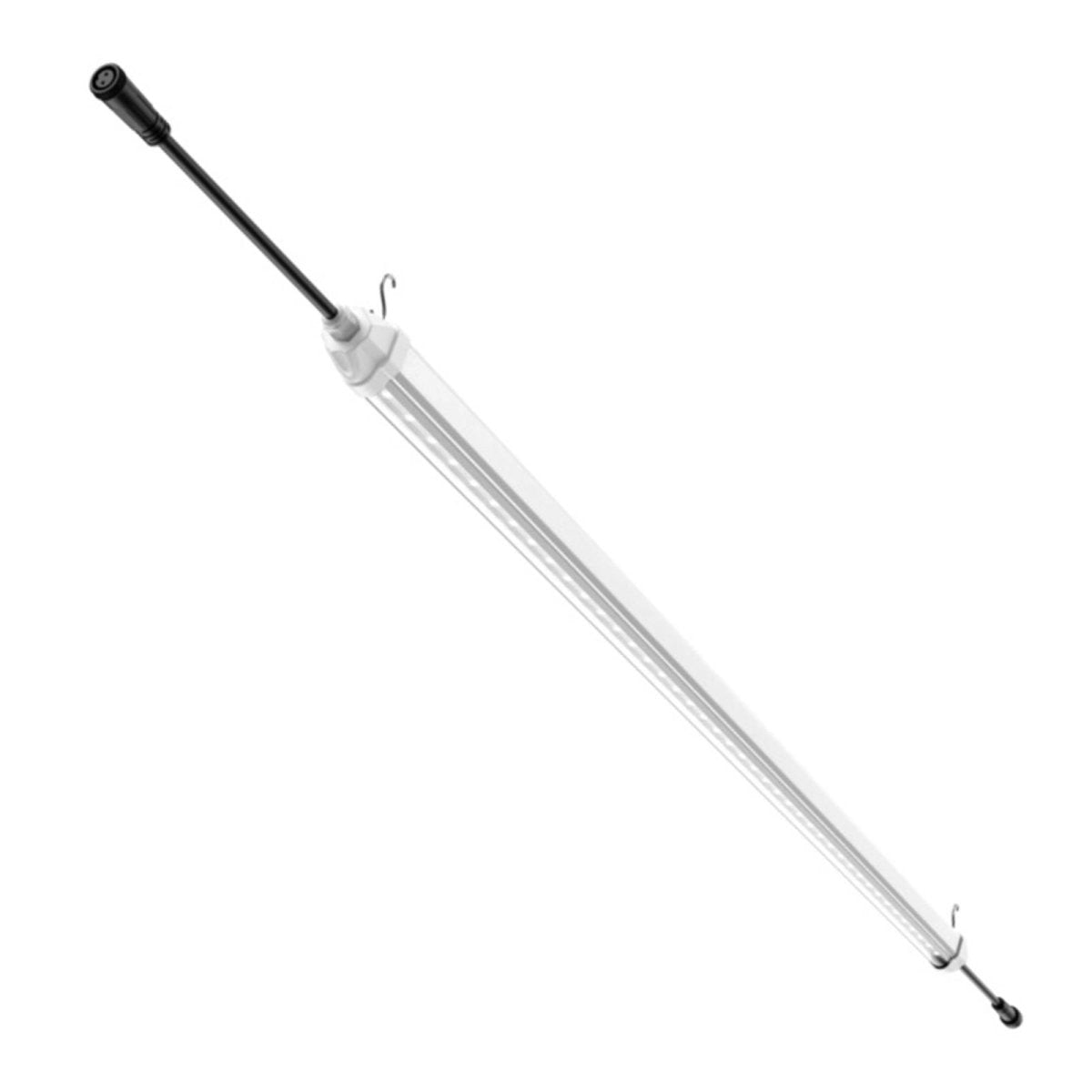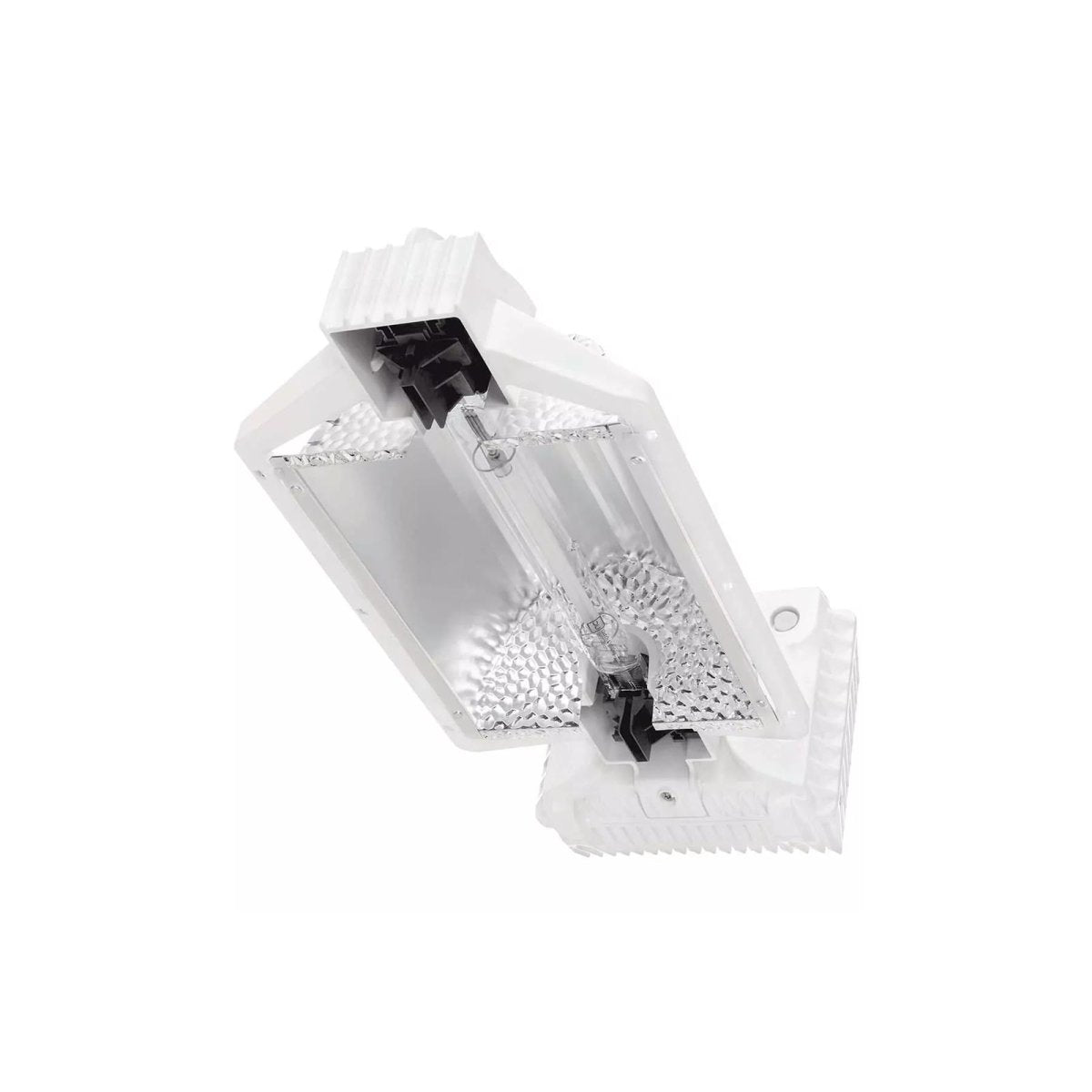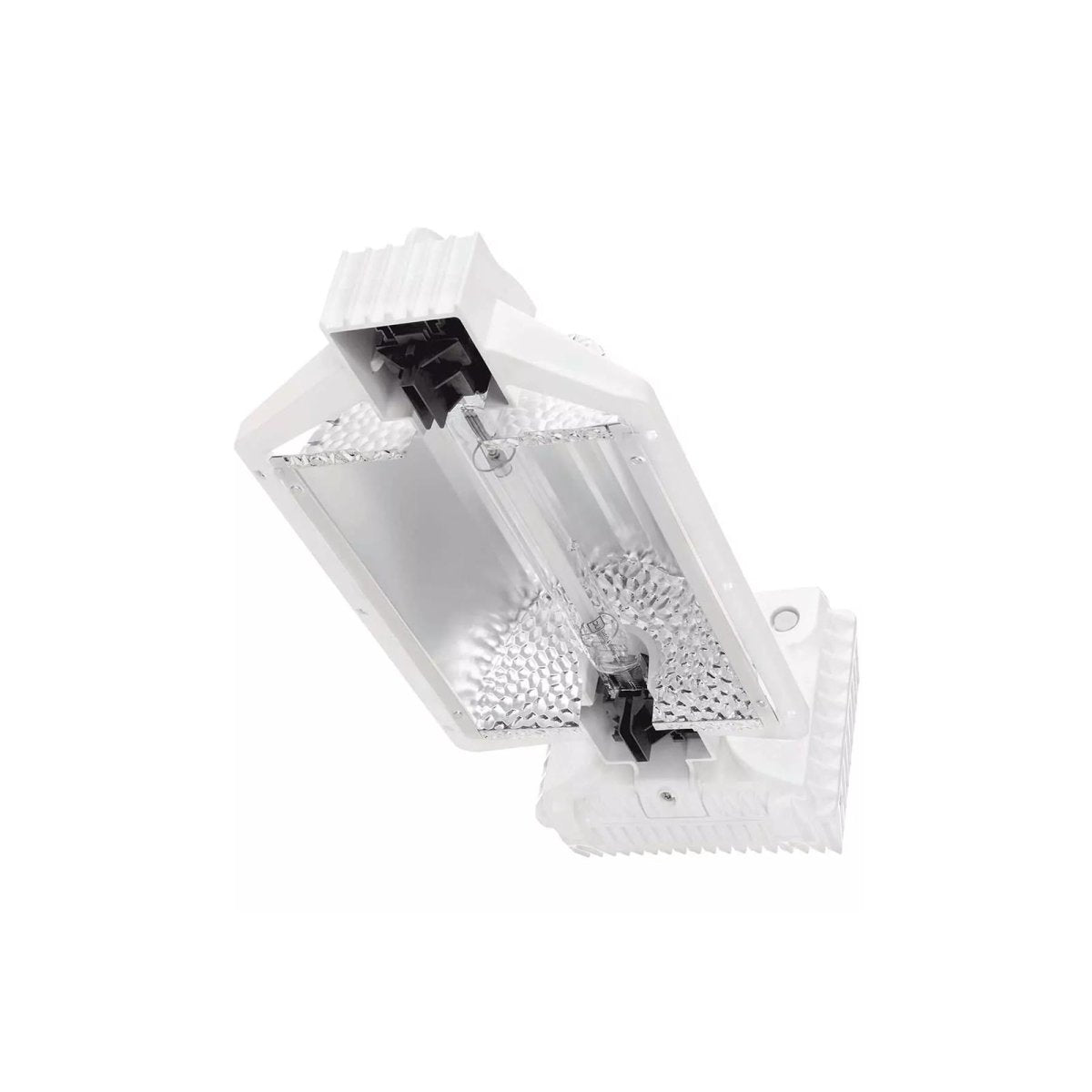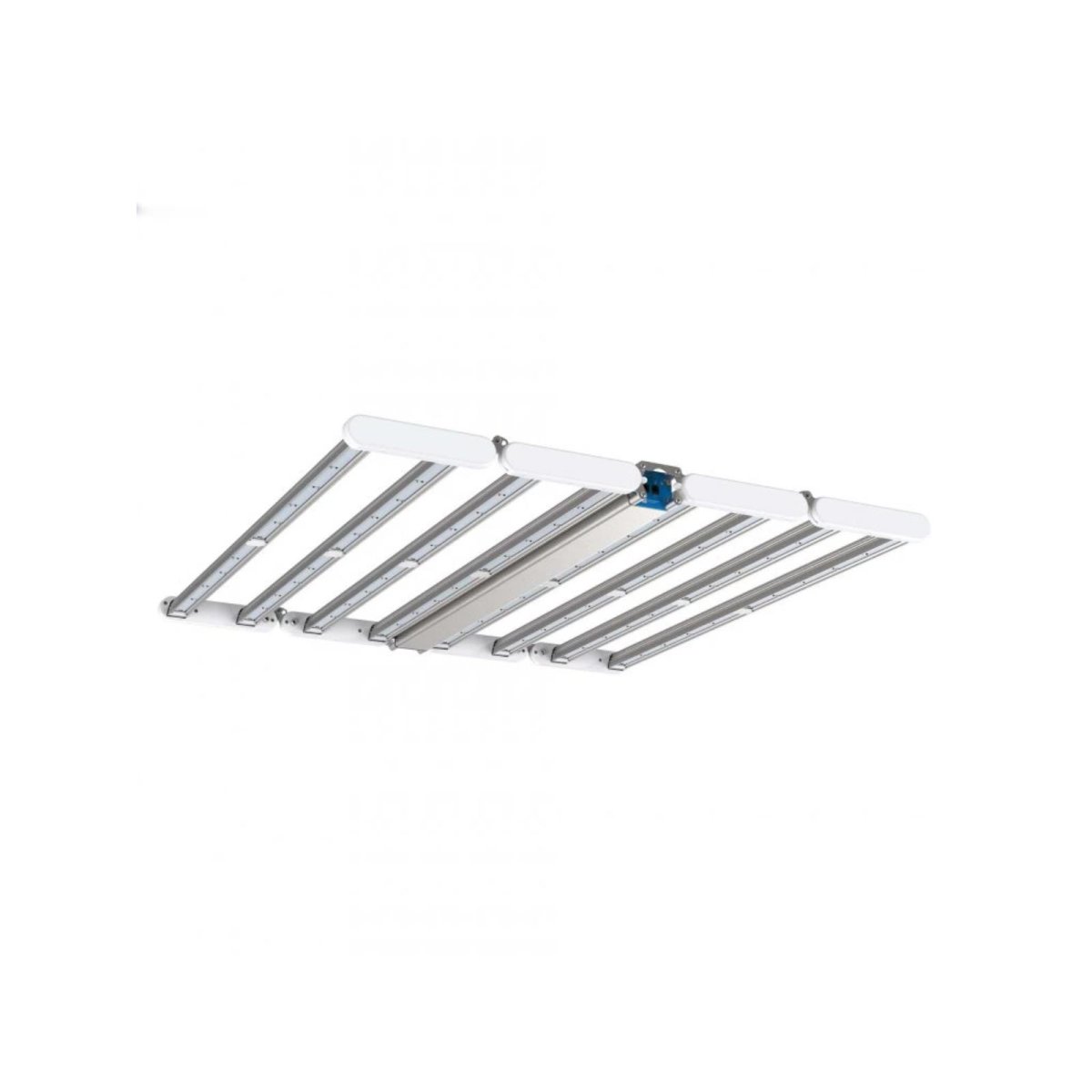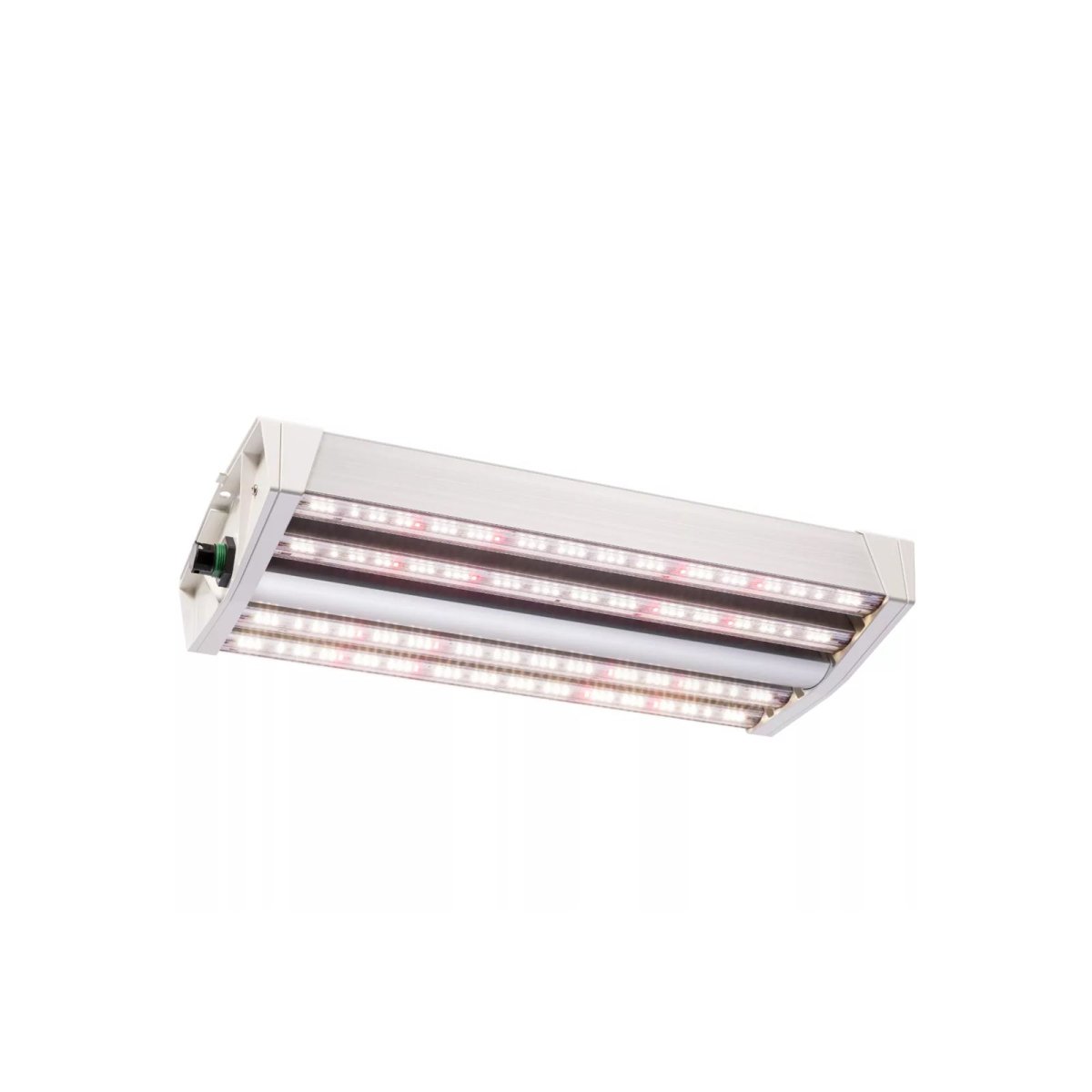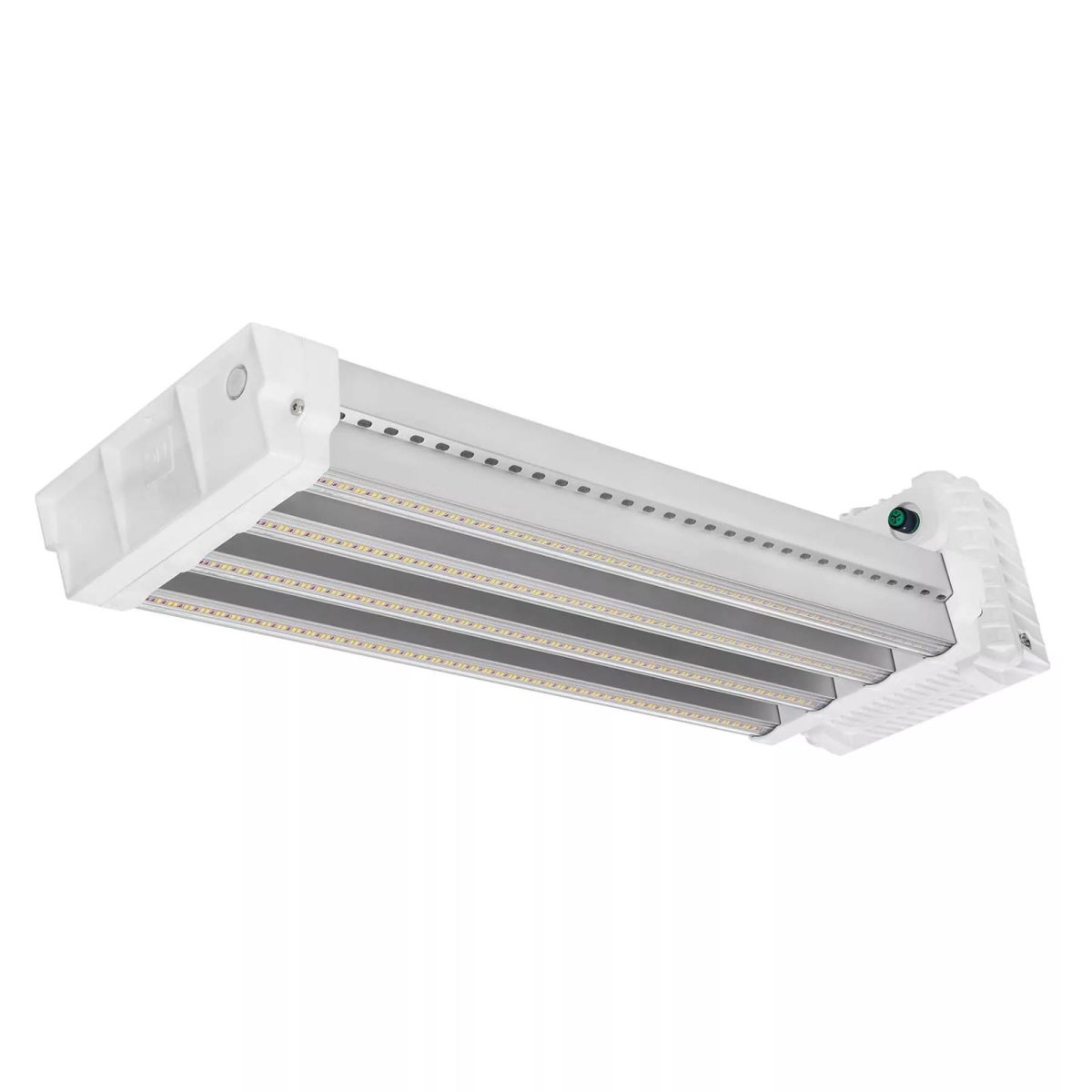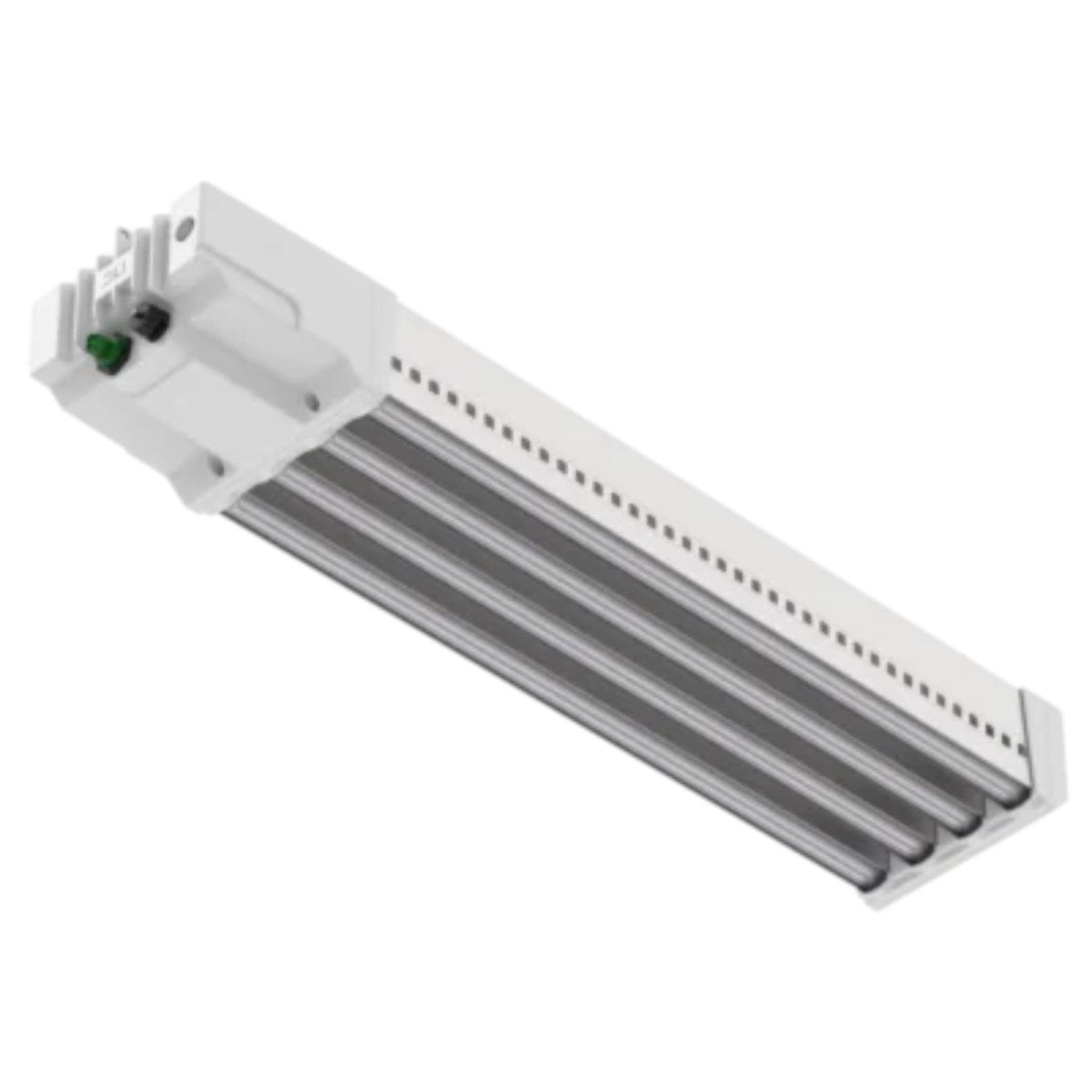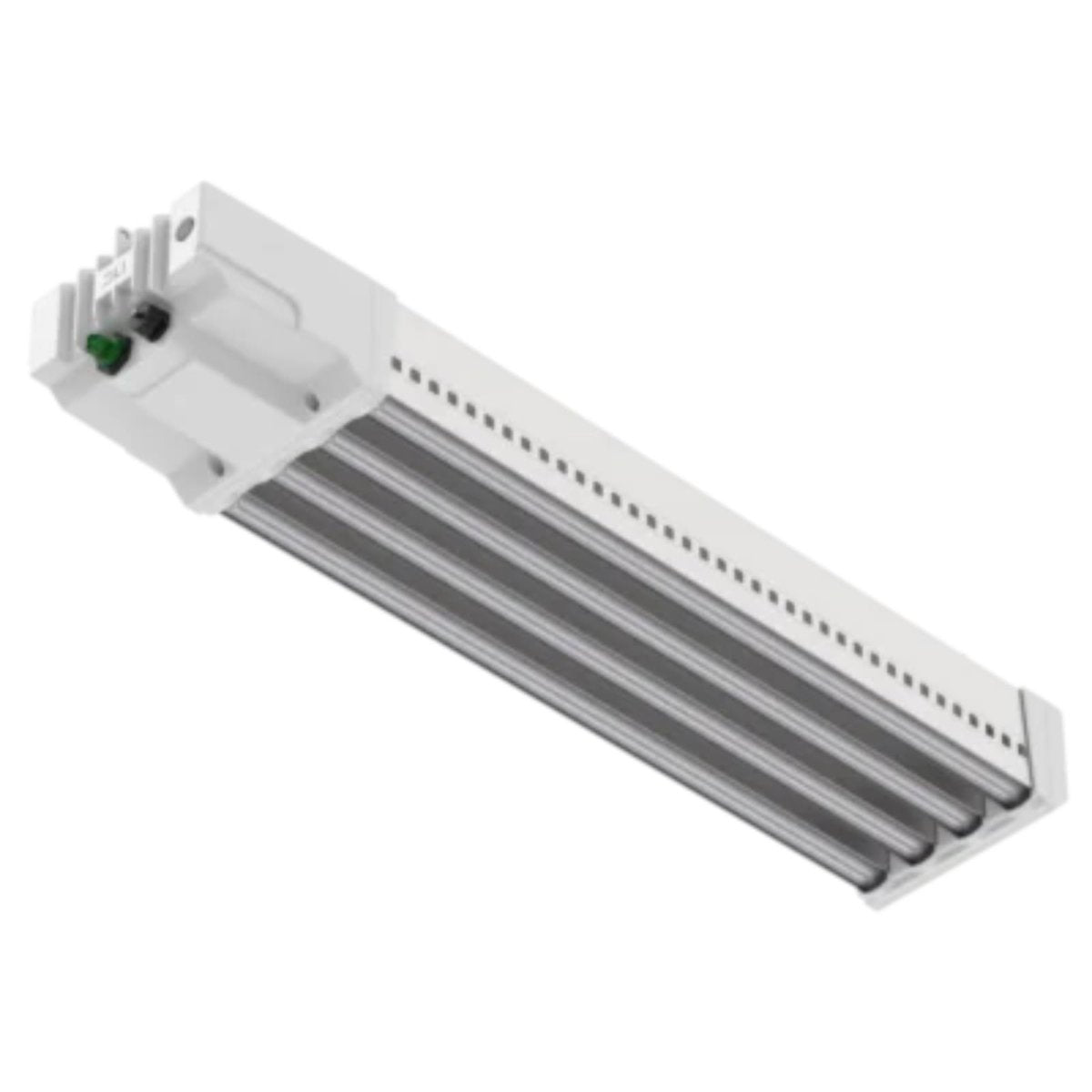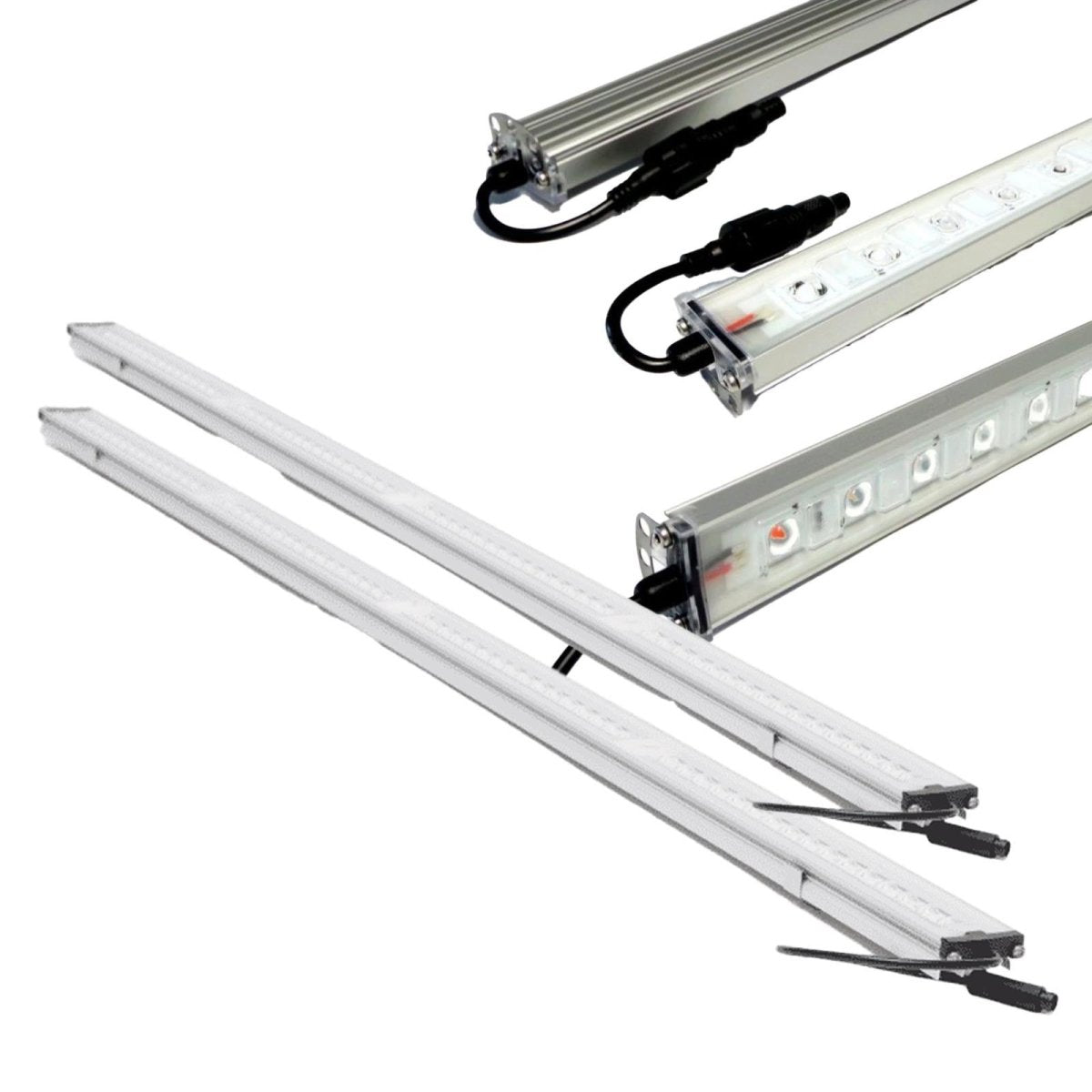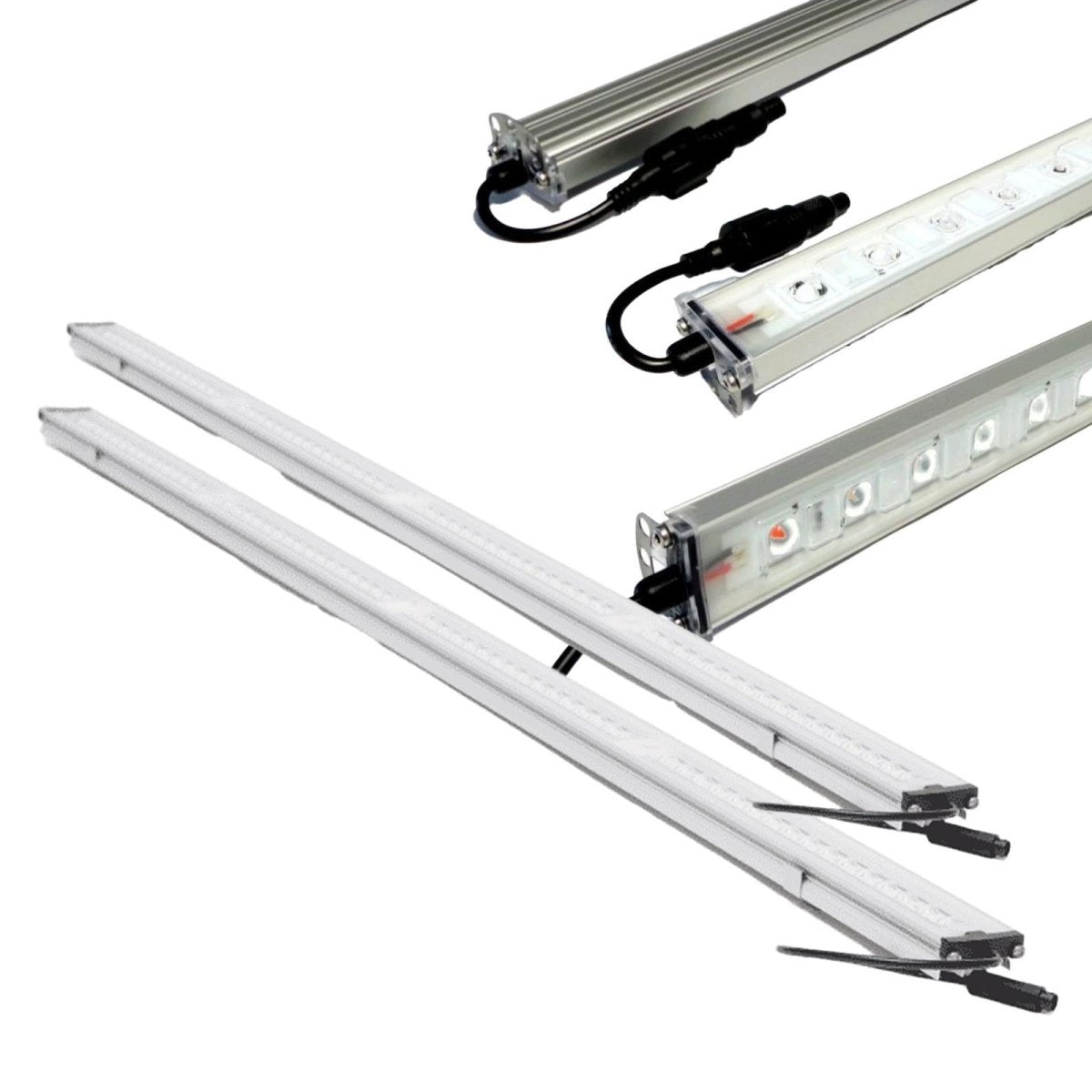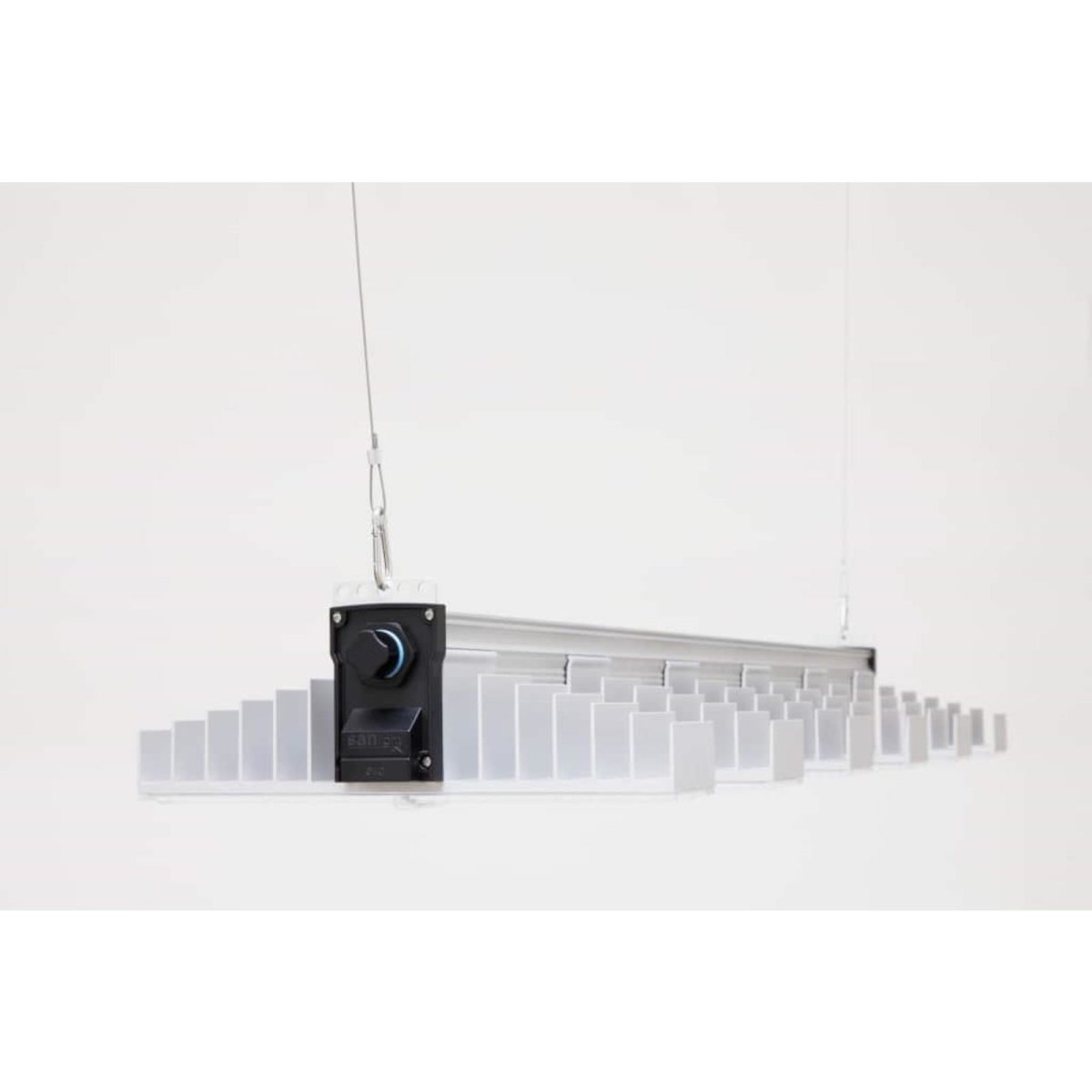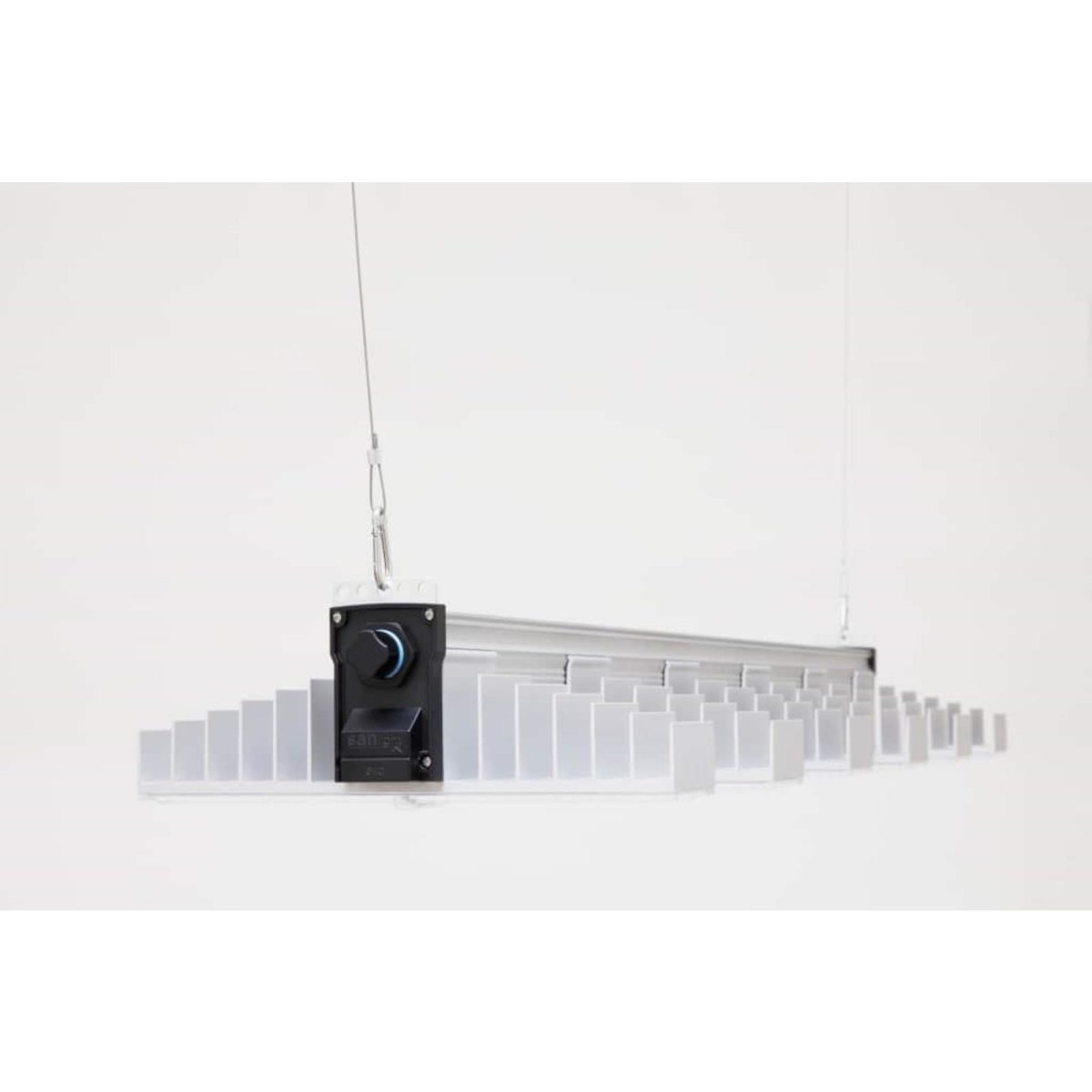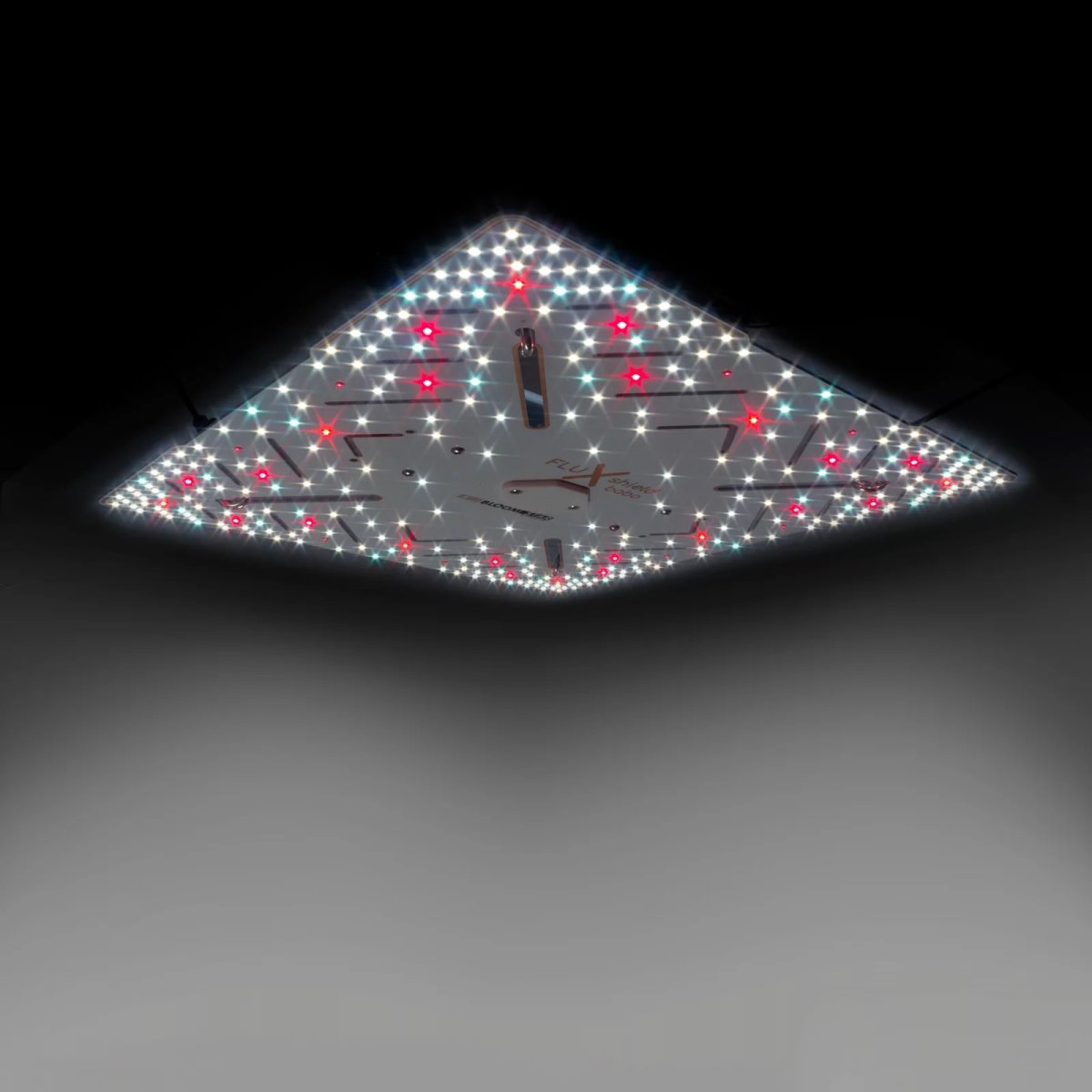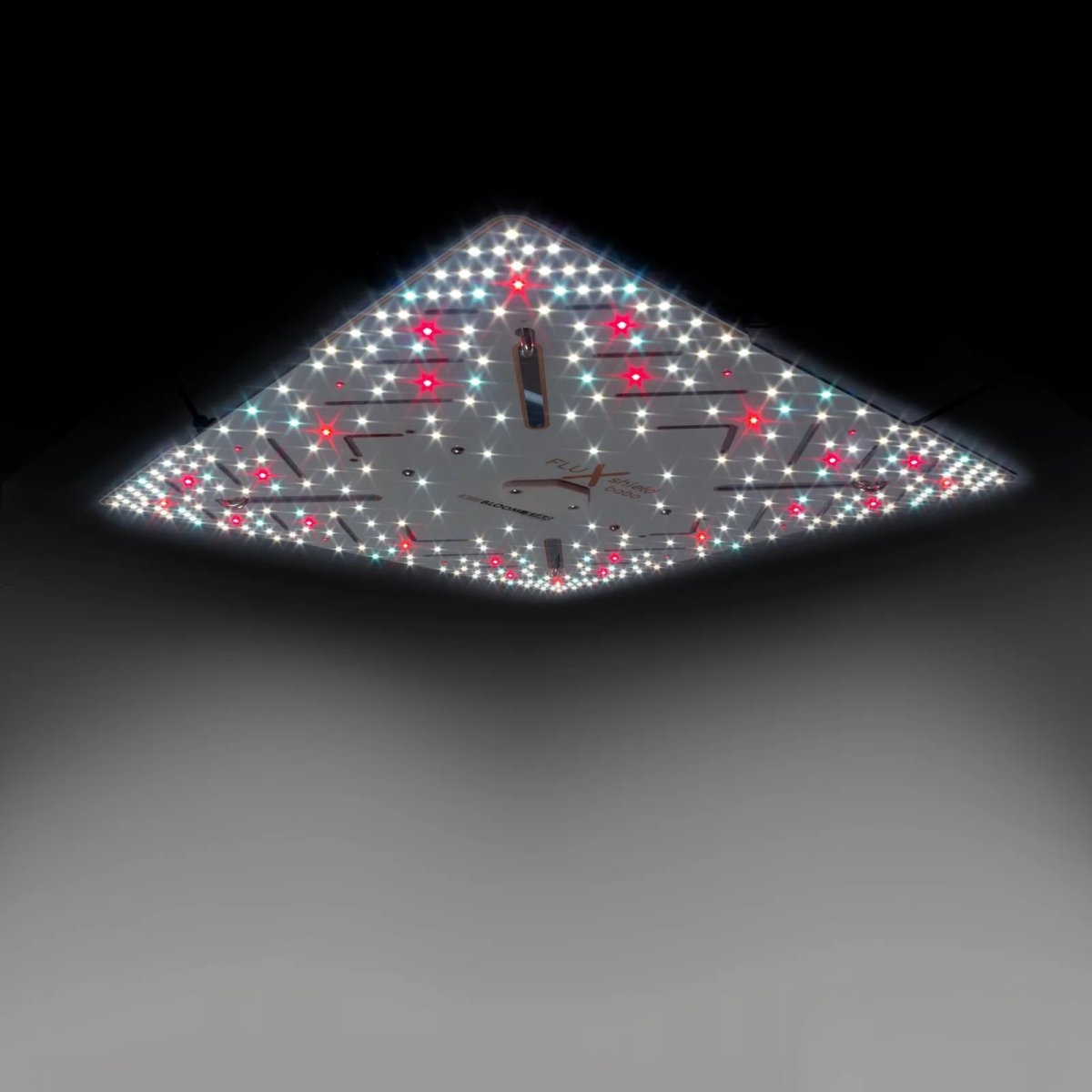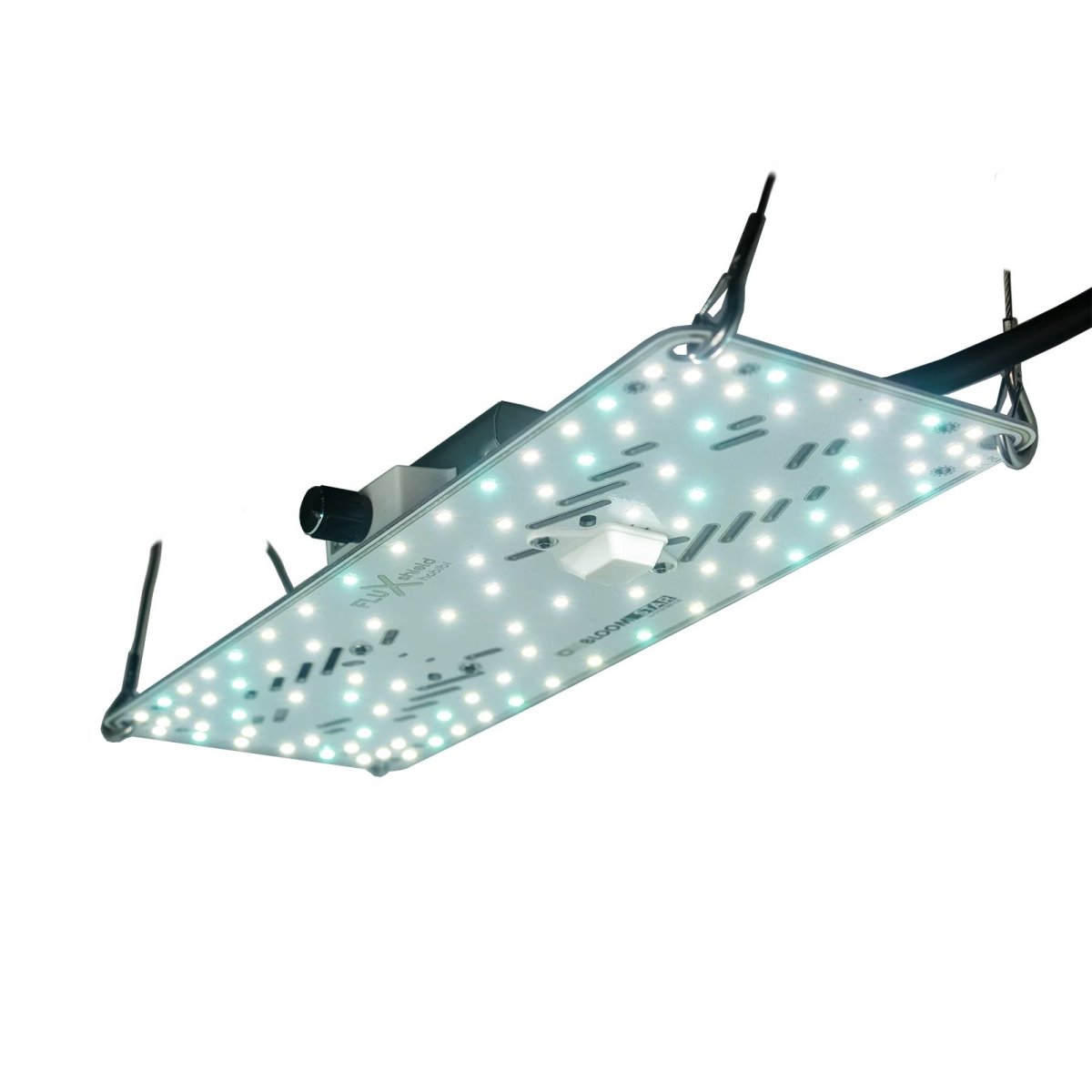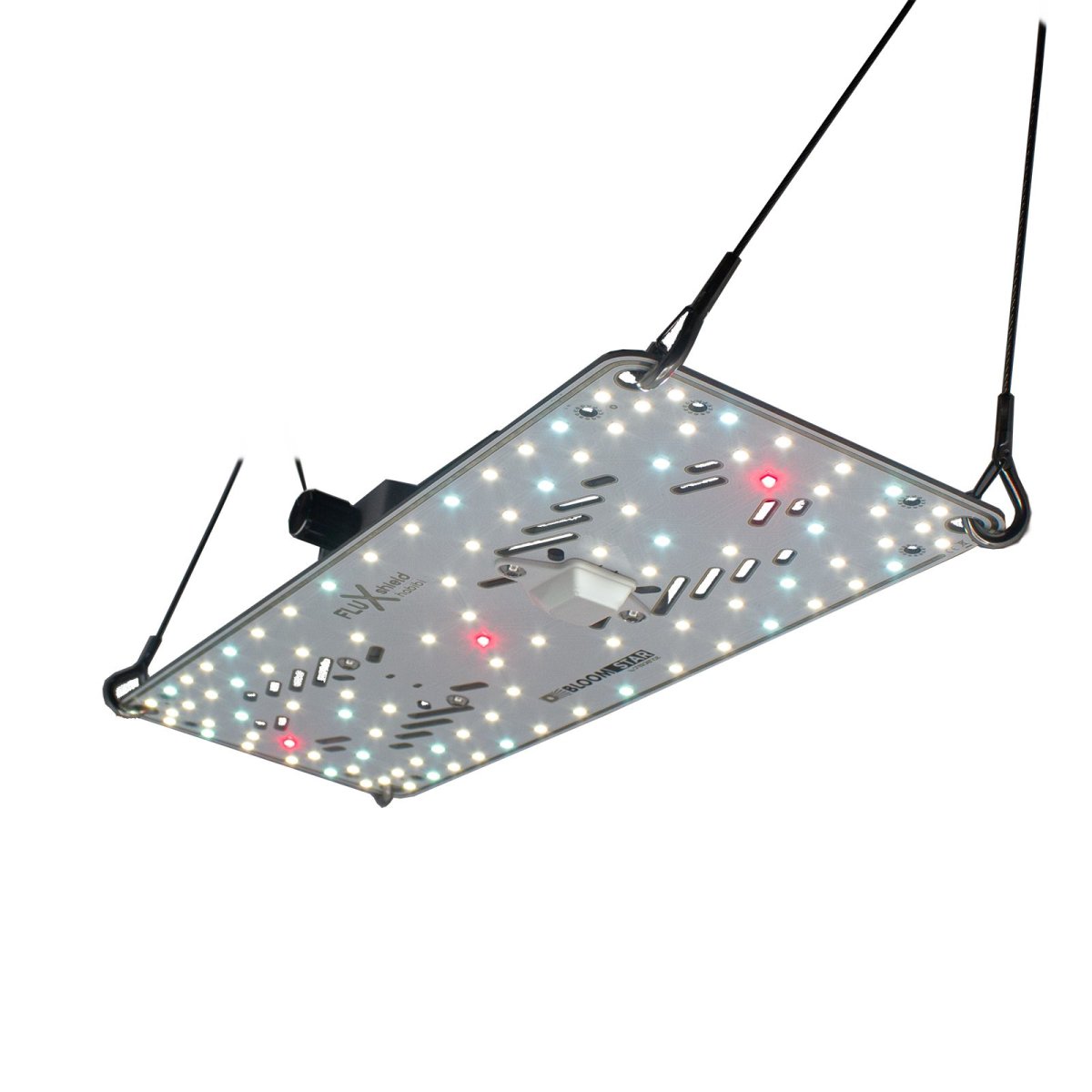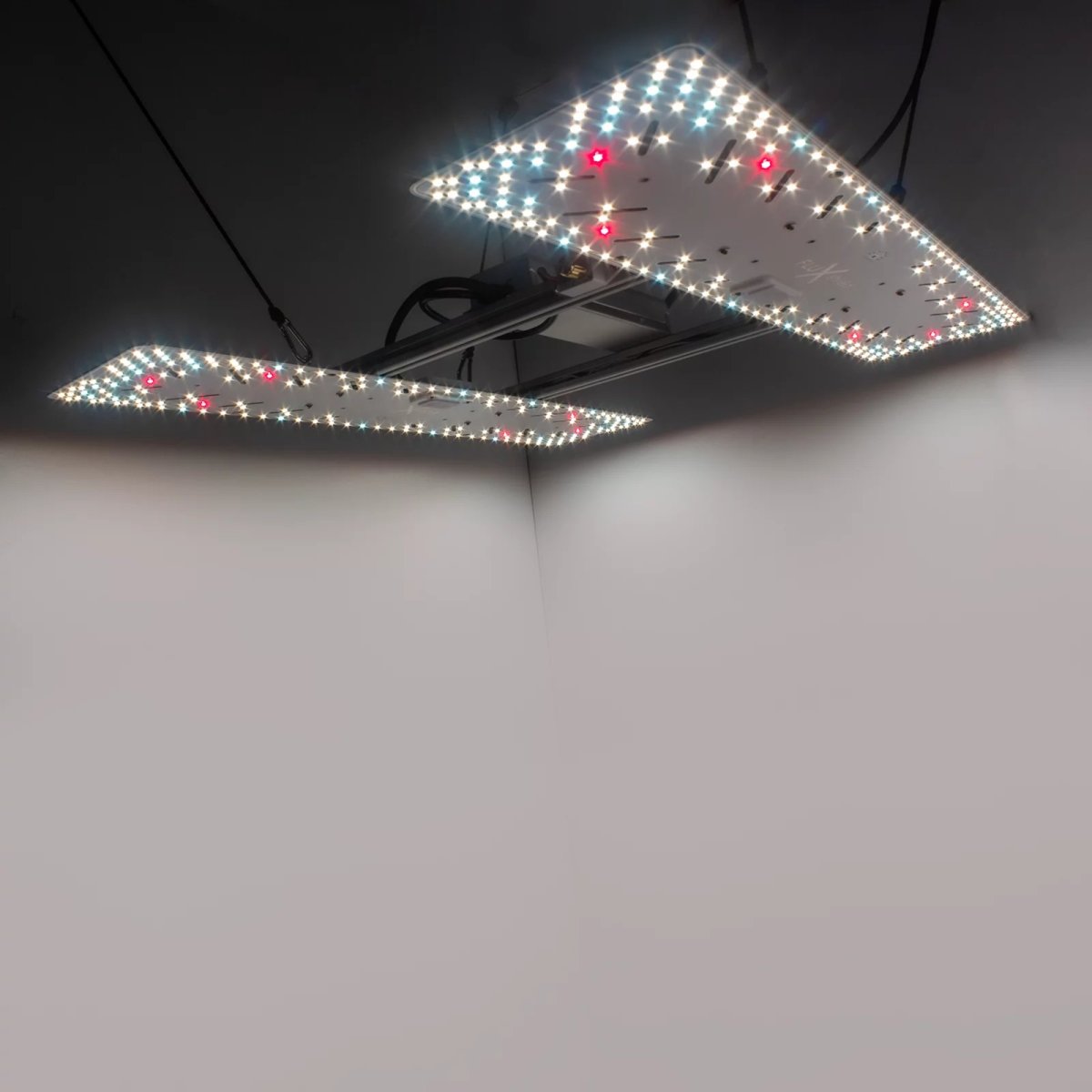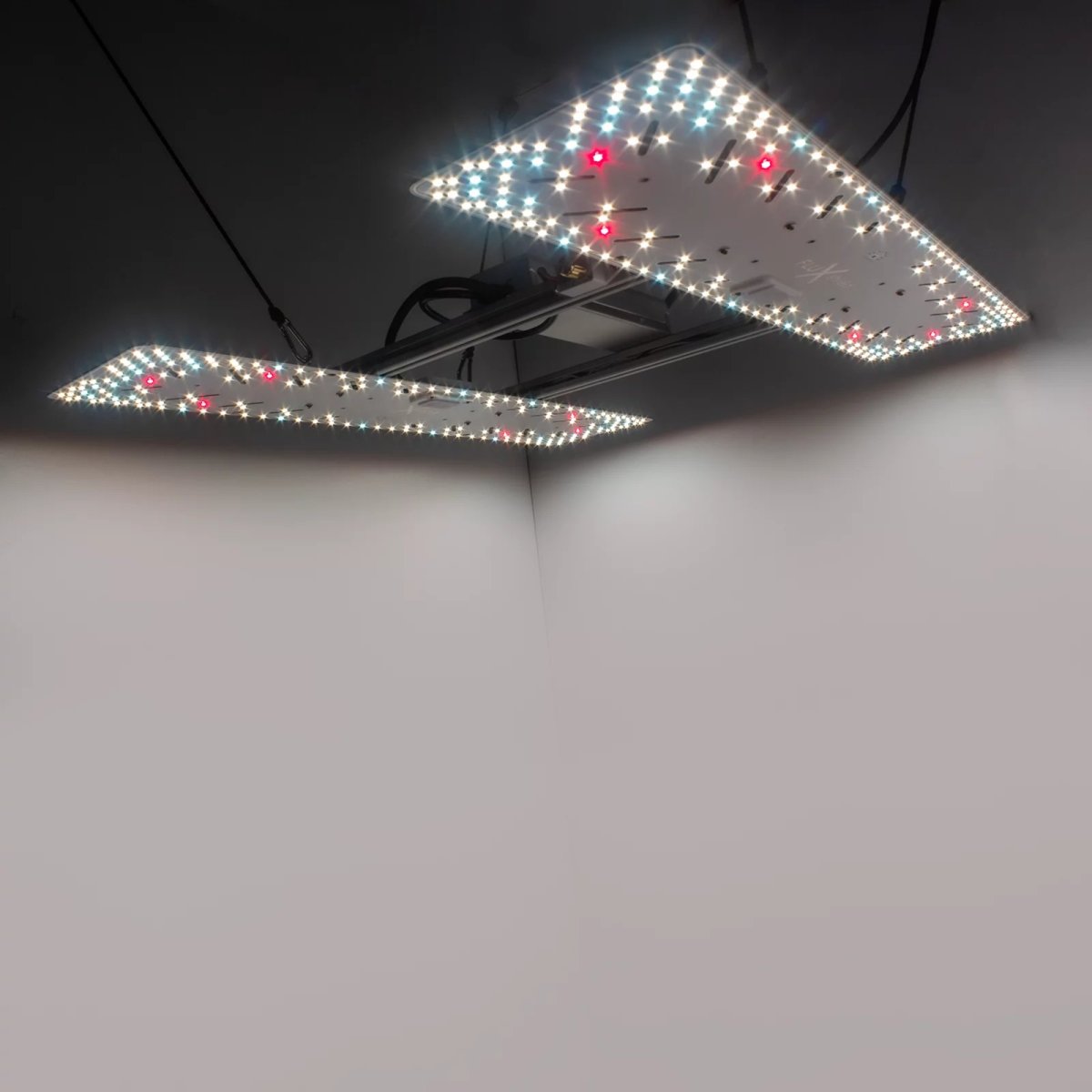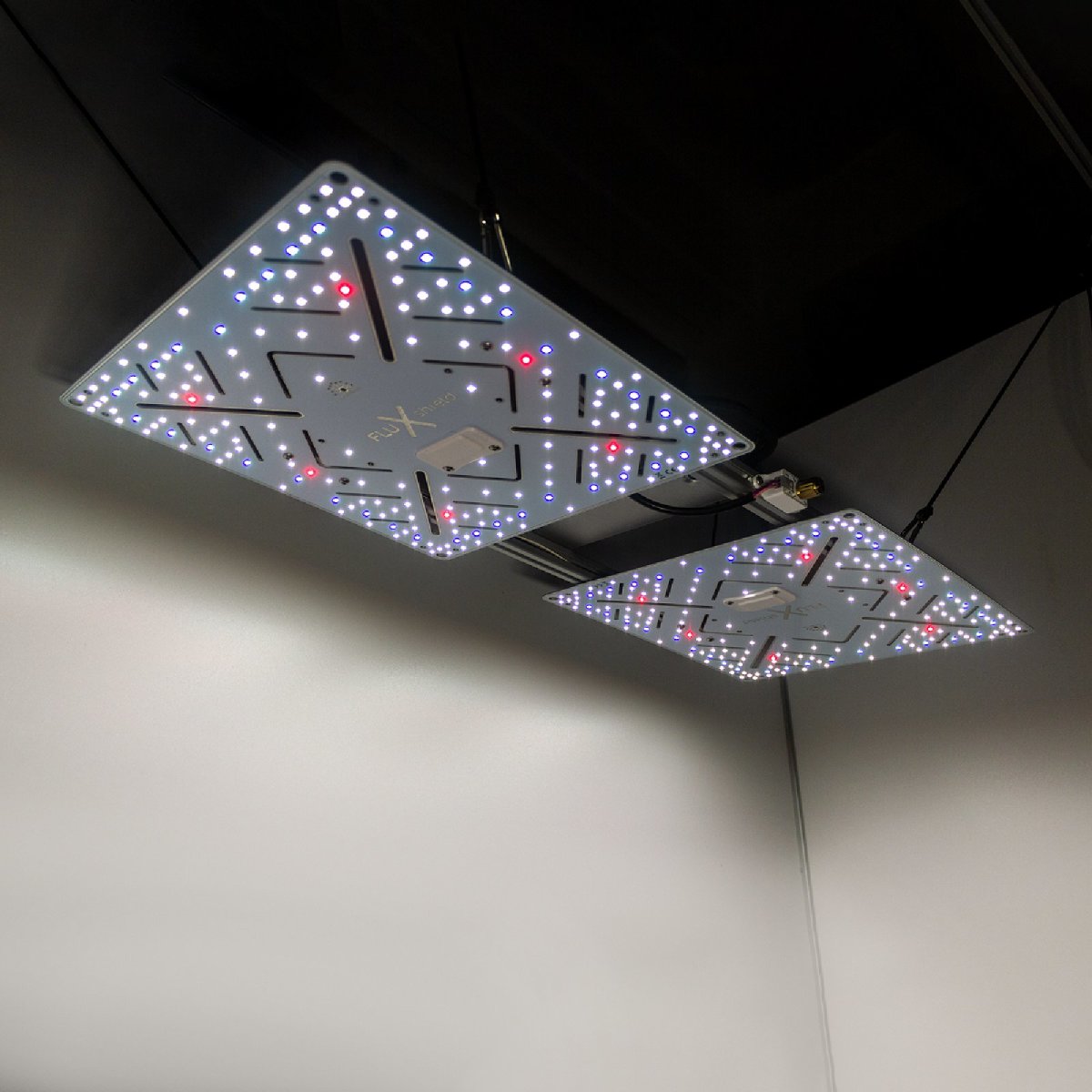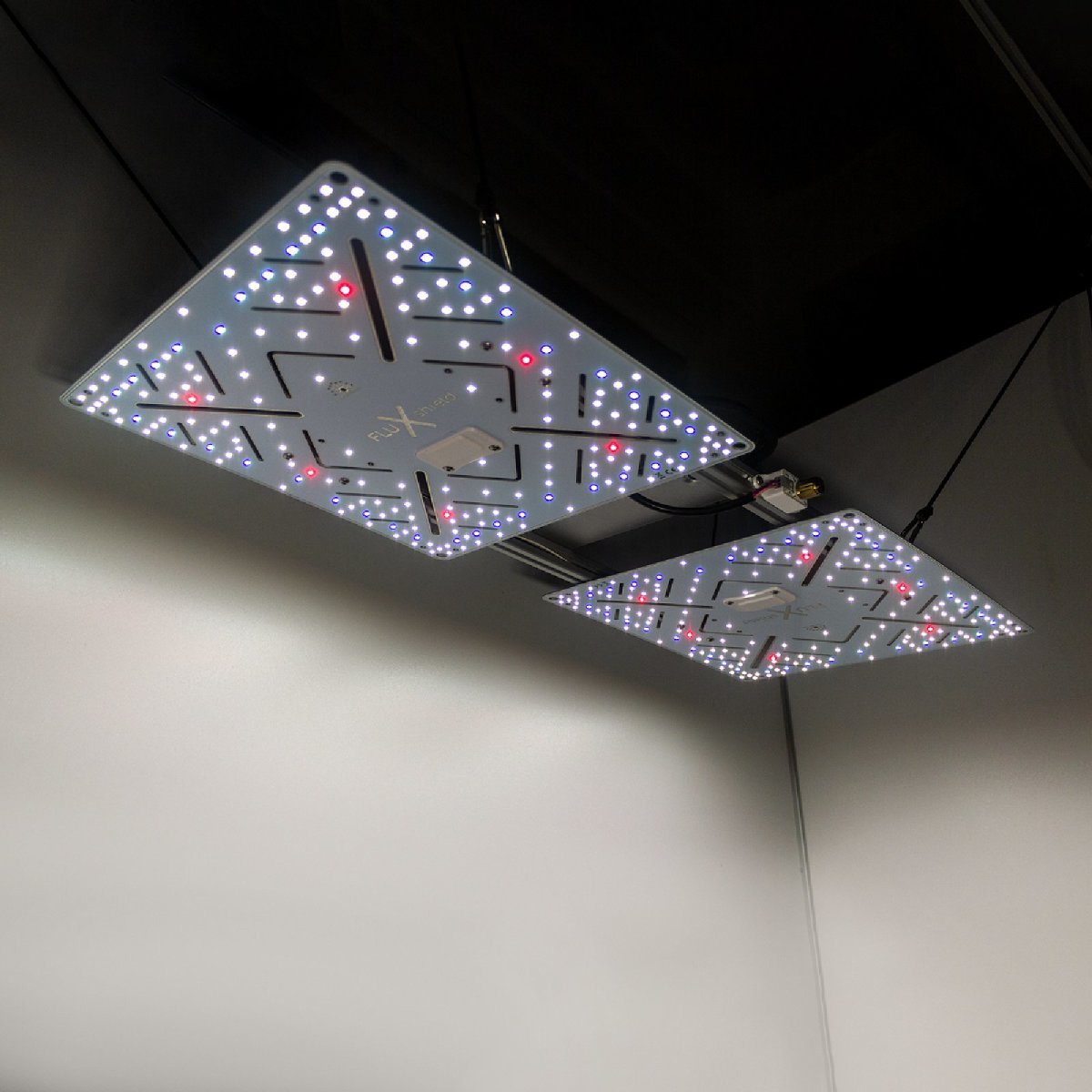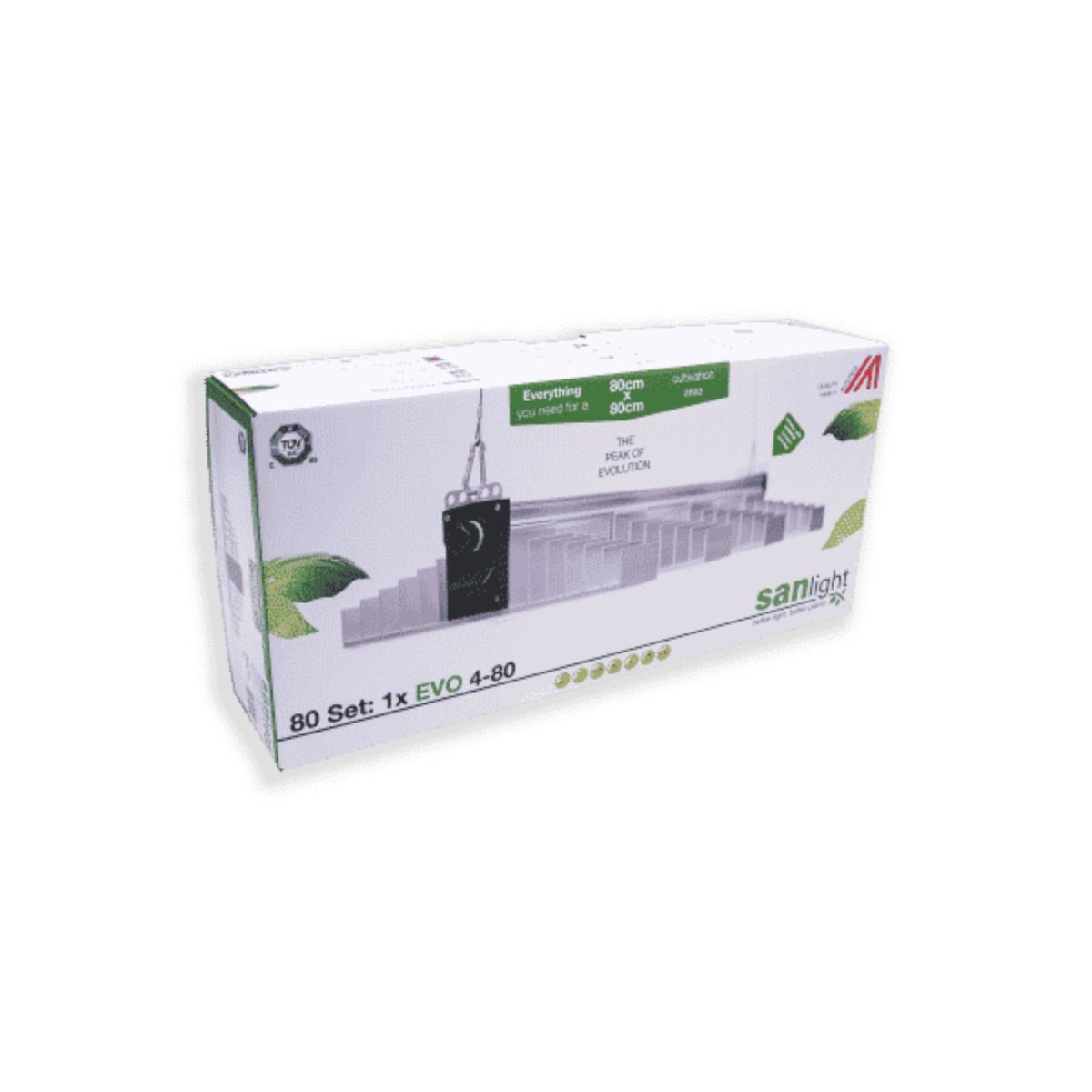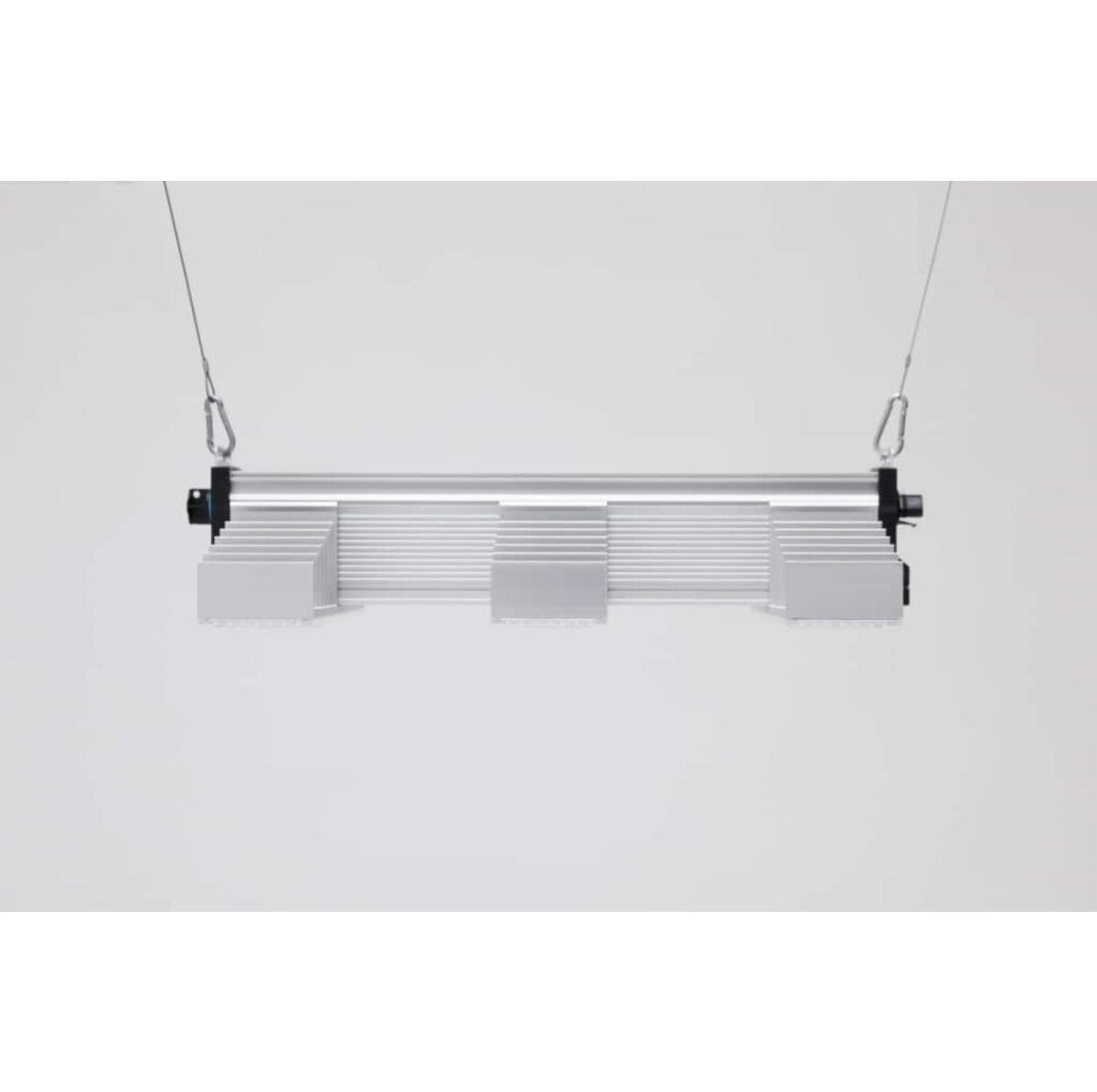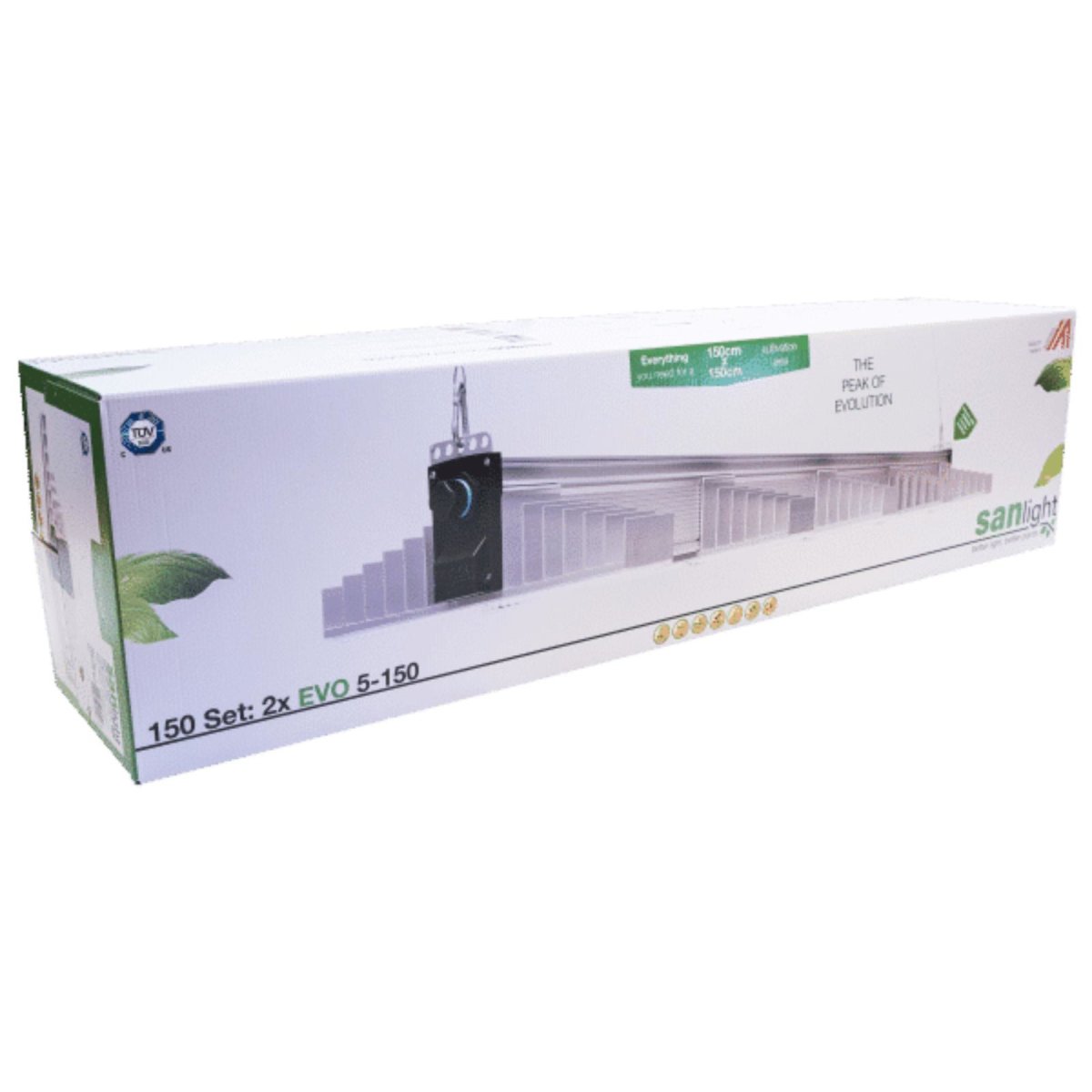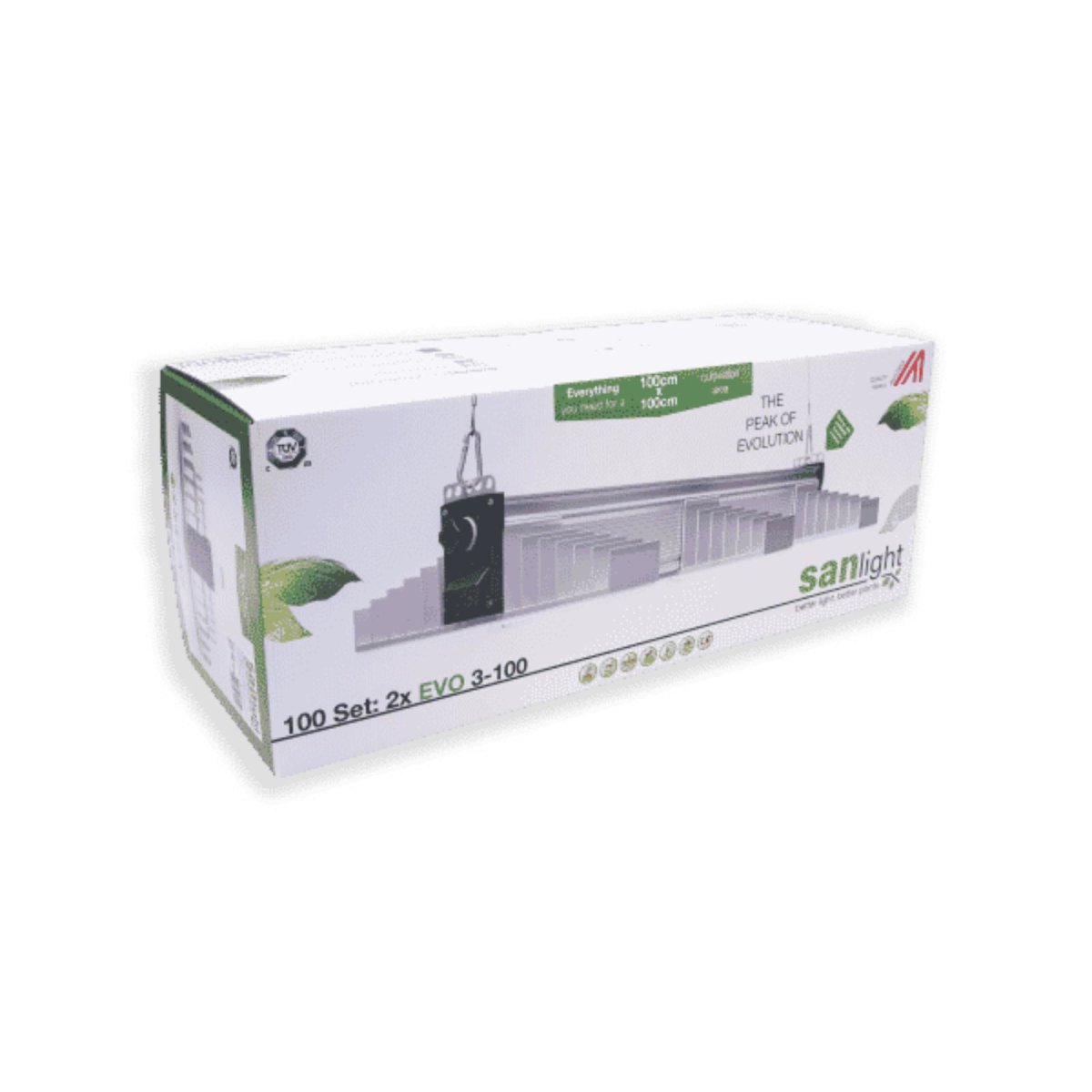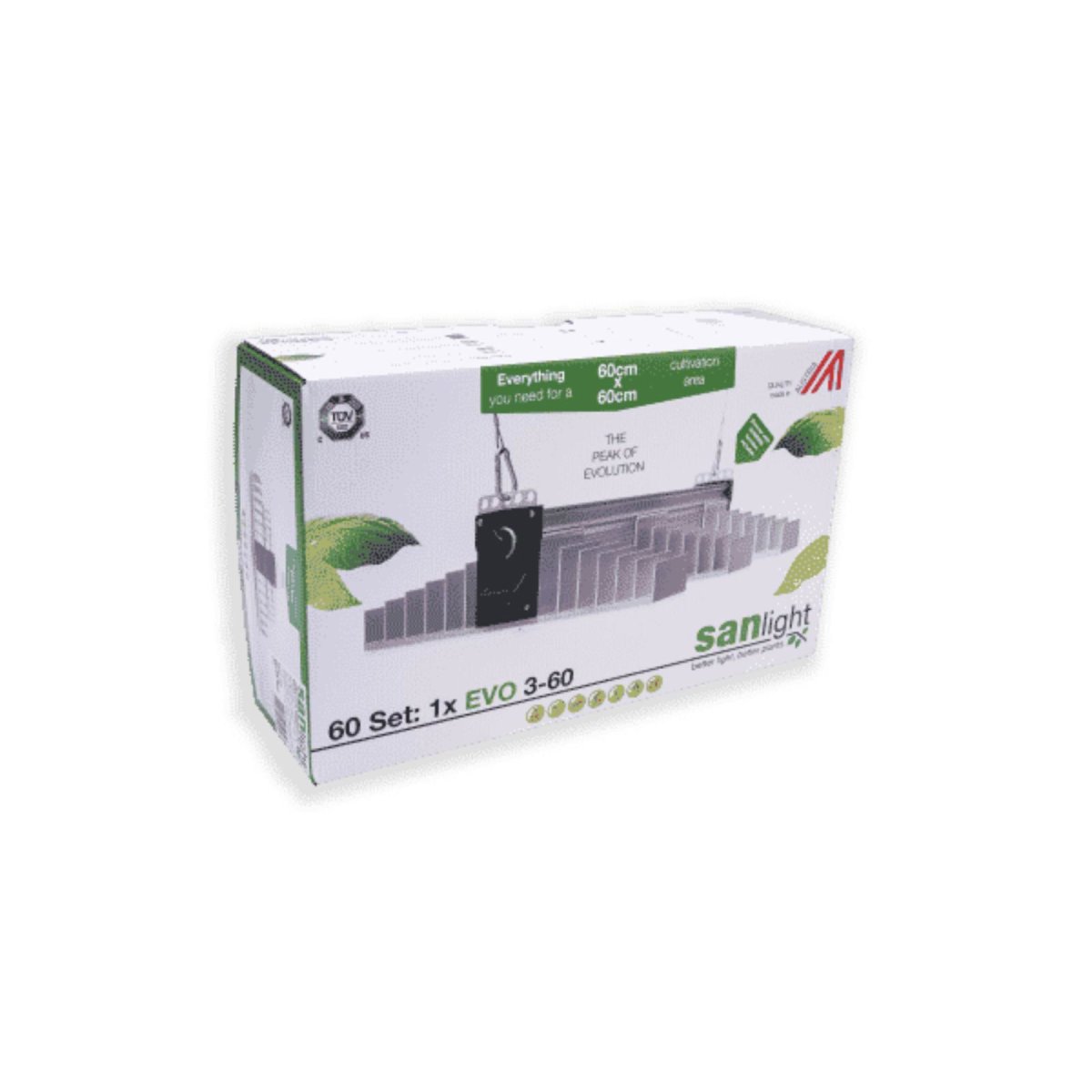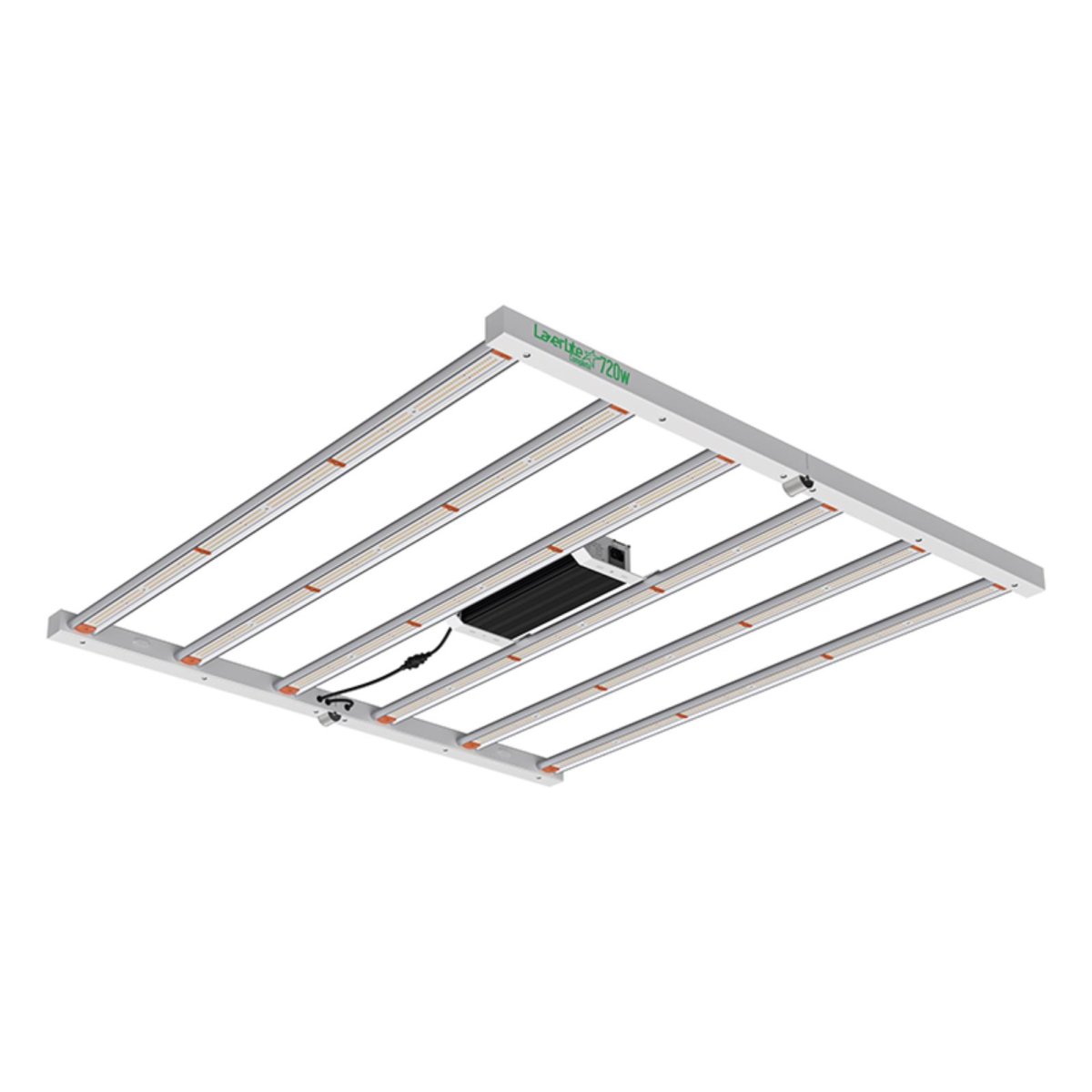
Buy LED lamp cannabis
Filters
136 products
What are LED grow lights?
LED grow lights are state-of-the-art lighting systems specifically designed for indoor plant cultivation. These innovative light sources use light-emitting diodes (LEDs) to produce an optimal light spectrum for plant growth. Unlike conventional lighting systems such as sodium vapor lamps (NDL) or metal halide lamps (MHL), LED grow lights offer a number of advantages that are revolutionizing indoor cultivation.
Advantages over conventional lighting systems
LED grow lamps impress with their superior efficiency and performance:
- Energy efficiency: LED grow lights use up to 40% less electricity than traditional lighting systems, which has a positive effect on your electricity bill.
- Less heat generation: LEDs produce significantly less heat, which minimizes the risk of heat damage to your plants and reduces the need for additional cooling.
- Durability: High-quality LED grow lamps have a service life of up to 50,000 operating hours, far exceeding conventional lamps.
- Spectral adaptability: LED technology allows you to precisely adjust the light spectrum to the different growth phases of your plants.
- Space-saving: Thanks to their compact design, LED grow lamps are particularly suitable for confined growing spaces and multi-level cultivation.
How it works and technology
LED grow lamps are based on semiconductor technology. When electricity flows through the semiconductor, electrons are excited and emit energy in the form of light. The key advantage: Depending on the semiconductor material used, LEDs can produce light of different wavelengths.
Modern LED grow lamps combine different LED types to produce a balanced light spectrum:
- Blue LEDs (450-495 nm) promote vegetative growth and leaf development.
- Red LEDs (620-750 nm) stimulate flower formation and fruit development.
- White LEDs complement the spectrum and ensure uniform illumination.
Some advanced models also integrate UV and IR LEDs to imitate natural sunlight even more precisely and further optimize plant development.
The control electronics enable precise control of the light intensity and composition. Many modern LED grow lamps can be operated via smartphone apps or central grow room control systems, which allows flexible adaptation to the needs of your plants.
With LED grow lamps, you can bring the latest lighting technology into your grow room. They offer you the opportunity to optimally adjust the lighting conditions to your plants while saving energy and costs. In the following sections, you will learn how you can use the full potential of this innovative technology for your indoor cultivation.
The optimal light spectrum for cannabis plants
To reach the full potential of your cannabis plants, it is crucial to provide them with the right light spectrum. LED grow lights offer you the unique opportunity to precisely adjust the light spectrum to the needs of your plants. Let's delve deeper into the world of photosynthesis and find out how to create the optimal light for your green protégés.
Photosynthetically active radiation (PAR)
The key to understanding the optimal light spectrum lies in photosynthetically active radiation, or PAR for short. PAR covers the wavelength range of light from 400 to 700 nanometers that plants can use for photosynthesis.
Within this spectrum, cannabis plants react particularly strongly to certain wavelengths:
- 430-450 nm (blue): Promotes compact growth and leaf development
- 450-500 nm (blue-green): Supports photosynthesis in deeper leaf layers
- 640-680 nm (red): Stimulates flower formation and resin production
A high-quality LED grow lamp covers this entire PAR range and allows you to specifically control the light intensity in different spectral ranges.
Importance of different light colors for plant growth
Each light color plays a specific role in the life cycle of your cannabis plants:
- Blue light (400-500 nm):
- Green light (500-600 nm):
- Red light (600-700 nm):
- Far red light (700-750 nm):
- UV light (280-400 nm):
Modern LED grow lamps allow you to optimally combine these different light colors and even adjust them over the course of the growth cycle.
Full spectrum LEDs: myth or reality?
The term "full spectrum" is often used as a marketing buzzword, but it can be misleading. In reality, there is no artificial light that exactly mimics the full spectrum of sunlight.
However, high-quality "full spectrum" LED grow lights offer a broad, balanced spectrum that covers the most important wavelengths for plant growth. They combine different types of LEDs to produce a light that is very close to natural sunlight.
Advantages of full spectrum LEDs:
- Support all growth phases from germination to harvest
- Promote balanced plant development
- Reduce the need to switch lamps between vegetative and flowering phases
Note, however, that some plants may benefit from adjusting the spectrum at different stages of growth. Advanced LED systems allow you to dynamically adjust the spectrum to take full advantage of different light colors.
With the knowledge of the importance of different light spectrums for your cannabis plants, you can now make informed decisions when selecting and setting up your LED grow lights. In the next section, you will learn what to look for when choosing the perfect LED grow light for your needs.
Choosing the right LED grow light
Choosing the perfect LED grow light for your indoor grow can be crucial to the success of your harvest. To find the optimal lighting for your cannabis plants, you need to consider a few important factors. Let's go through the most important aspects to consider when making your selection.
Important key figures and terms (PAR, PPF, PPFD)
To compare the performance of different LED grow lights, it is important to understand the following metrics:
- PAR (Photosynthetically Active Radiation):The wavelength range of light (400-700 nm) that plants can use for photosynthesis.
- PPF (Photosynthetic Photon Flux):The total amount of PAR a light source produces per second, measured in micromoles per second (μmol/s).
- PPFD (Photosynthetic Photon Flux Density):The amount of PAR that actually reaches a given area, measured in micromoles per square meter per second (μmol/m²/s).
The higher the PPFD value, the more usable light reaches your plants. However, keep in mind that too much light can also be harmful. For cannabis plants, PPFD values of 300-600 μmol/m²/s during the vegetative phase and 600-1000 μmol/m²/s during the flowering phase are ideal.
Wattage and cultivation area
The wattage you need depends on the size of your growing area. As a rule of thumb:
- 30-50 watts per square foot (0.09 m²) for the vegetative phase
- 50-80 watts per square foot for the flowering phase
Note that these values apply to high-quality LED grow lights. Cheaper models may require more wattage. Modern, efficient LEDs can often achieve the same or even better light output with less wattage than older models.
Dimmability and control options
Advanced LED grow lights offer a variety of control options:
- Dimmability:Allows you to adjust the light intensity to different growth phases.
- Spectrum adjustment:Some models allow separate control of different light colors.
- Programmable timers:Automate the day-night rhythm of your plants.
- Smartphone control:Allows you to remotely control and monitor your lighting.
These features give you maximum control over your growing environment and can lead to optimal results.
Cooling systems and thermal management
Although LED grow lights produce less heat than traditional lighting systems, effective heat management is still important:
- Passive cooling:Lightweight LED panels with large heatsinks for smaller setups.
- Active cooling:Built-in fans or water cooling for more powerful models.
- Thermal shutdown:Protection mechanism that switches off the lamp if it overheats.
A good cooling system extends the life of your LED grow lamp and ensures consistent light output.
When choosing your LED grow light, you should consider all of these factors. A high-quality light with the right specifications for your growing space and customizable settings will help you reach the full potential of your cannabis plants. In the next section, you'll learn how to get the most out of your new LED grow light to achieve maximum yields.
Optimal use of LED grow lamps
Once you've chosen the perfect LED grow light for your needs, it's crucial to get the most out of it. Proper use of your LED lighting can make the difference between a good harvest and an outstanding one. In this section, you'll learn how to get the most out of your LED grow light.
Lighting cycles for vegetative and flowering phase
Control over the light cycle is one of the biggest advantages of indoor cultivation. The following recommendations apply to cannabis plants:
- Vegetative phase:18-24 hours of light per day. A cycle of 18 hours of light and 6 hours of darkness (18/6) is most common.
- Flowering phase:12 hours of light and 12 hours of darkness (12/12). This cycle simulates the shorter days of late summer and triggers flowering.
Modern LED grow lights with integrated timers make it easy to follow these cycles precisely. Some advanced growers also experiment with more complex light cycles to promote specific traits or optimize energy consumption.
Correct positioning and height adjustment
The optimal positioning of your LED grow lamp is crucial for uniform growth and maximum light absorption:
- Height:Start with a distance of 45-60 cm between the lamp and the plant crown. Adjust the height if the plants show stress symptoms (e.g. leaves curling upwards when there is too much light).
- Even coverage:Make sure the light is evenly distributed across your growing area. Use reflectors or multiple lights for larger areas.
- Movable suspension:An adjustable hanging system allows you to easily adjust the lamp height as your plants grow.
Watch your plants closely and adjust positioning if necessary. Each variety can react differently to light intensity.
Adjust light intensity: dimming and boosting
The ability to adjust the light intensity is a huge advantage of LED grow lights. Here are some tips for getting the most out of them:
- Seedling and young plant phase:Start with a low intensity (about 25-50%) and increase slowly to avoid burns.
- Vegetative phase:Gradually increase the intensity to 50-75%, depending on the response of your plants.
- Flowering phase:Increase the intensity to 75-100% for maximum flower production. Some growers "boost" the light intensity in the last few weeks before harvest for potentially higher yields.
- Avoid heat stress:If temperatures get too high, you can slightly reduce the intensity without changing the light cycle.
Look for signs of too much or too little light. Pale leaves or burnt leaf tips indicate too much lighting, while long, thin stems can indicate a lack of light.
Another advantage of many LED systems is the ability to adjust the spectrum. Some growers prefer a more blue-heavy spectrum for the vegetative phase and increase the red during flowering. Experiment carefully with these settings to find the optimal combination for your specific strains.
By using your LED grow light correctly, you can not only save energy, but also significantly increase the quality and quantity of your harvest. In the next section, we'll look at some of the leading brands and models on the market to help you choose the best LED grow light for your needs.
Top brands and models in comparison
Choosing the right LED grow light can be overwhelming given the variety of brands and models on the market. To help you decide, we'll take a closer look at some of the leading manufacturers and their top products. Each brand has its own strengths and special features that make it suitable for different growing situations.
SANlight
SANlight has made a name for itself as a pioneer in LED grow technology and is known for its high-quality products made in Austria.
- Special features:Modular design, excellent cooling performance, optimized for rectangular and square growing areas
- Recommended model:SANlight Q6W Gen2 - ideal for medium to large growing areas
- Advantages:Easy upgrade by adding additional modules, magnet and Bluetooth dimmer for precise control
- Disadvantages:Higher price compared to some competitors
Lumatek
Lumatek is a global player in the grow lighting sector and offers a wide range of products for different applications.
- Special features:High efficiency, optimized for square surfaces, integrated dimming functions
- Recommended model:Lumatek Zeus 600W Pro - powerful option for experienced growers
- Advantages:Excellent value for money, robust construction
- Disadvantages:Some models may be too complex for beginners
hortiOne
As a young, innovative company, hortiOne has quickly built a reputation for high-quality, affordable LED solutions.
- Special features:Excellent price-performance ratio, optimized flowering spectrum, flat design
- Recommended model:hortiOne 600W Fold - perfect for growers who value flexibility
- Advantages:Easy to use, well suited for multi-level installation, button and Bluetooth dimmers
- Disadvantages:Less established brand compared to some competitors
Maxibright
Maxibright is known for its robust, high-performance LED systems, which are particularly suitable for commercial applications.
- Special features:High light output, square illumination, integrated dimmer on Pro models
- Recommended model:Maxibright Daylight 660W LED - ideal for large cultivation areas
- Advantages:Durable construction, even light distribution
- Disadvantages:May be oversized for small grow setups
Greenception
Greenception specializes in the development of LED systems that closely imitate natural sunlight.
- Special features:Full spectrum LEDs, suitable for rectangular and square areas, advanced spectrum adjustment
- Recommended model:Greenception GN-4 - versatile option for medium-sized cultivation areas
- Advantages:Two pre-installed dimmers for maximum control, energy efficient
- Disadvantages:Higher initial investment, but can pay off in the long run
When choosing your LED grow light, you should consider not only the technical specifications but also your budget, the size of your growing area and your specific growing goals. High-quality LED grow lights are an investment in the future of your grow. Not only do they offer better light quality and control, but they can also contribute significantly to energy savings and increased yields.
In the next section, we'll take a closer look at how this energy efficiency can impact your operating costs and the long-term benefits of LED grow lights.
Energy efficiency and cost savings
One of the outstanding features of LED grow lights is their impressive energy efficiency. This efficiency not only has a positive impact on the environment, but can also significantly reduce your running costs. Let's take a closer look at how using LED grow lights can affect your energy consumption and budget.
Power consumption compared to HPS lamps
The difference in power consumption between LED grow lamps and conventional high-pressure sodium (HPS) lamps is considerable:
- A typical 600W HPS lamp actually consumes about 660W of power due to the ballast.
- A comparable LED grow lamp can produce the same amount of light with only 300-400W.
This means an energy saving of 40-50% just by switching to LED technology. Here is a concrete example:
Lamp typeDaily consumption (18h)Monthly consumptionAnnual consumption600W HPS11.88 kWh356.4 kWh4,276.8 kWh400W LED7.2 kWh216 kWh2,592 kWh
Assuming an electricity price of €0.30 per kWh, this would mean an annual saving of around €505!
Long-term profitability and ROI
Although LED grow lamps are often more expensive to purchase than HPS lamps, this investment usually pays for itself quickly:
- Energy saving:As shown above, annual electricity costs can be reduced by hundreds of euros.
- Longer lifespan:Quality LEDs have a lifespan of 50,000 hours or more, compared to 10,000-20,000 hours for HPS lamps.
- Lower maintenance costs:LEDs need to be replaced less often, saving time and money.
- Potential yield increase:Through optimized spectrum and better light distribution, LEDs can lead to higher yields.
A typical example of return on investment (ROI):
- Purchase cost of a high-quality LED grow lamp: 800€
- Annual energy savings: 505€
- Payback period: About 1.6 years
After this point, the LED grow light starts to actively save money and contribute to the profitability of your cultivation.
Impact on air conditioning and ventilation
An often overlooked advantage of LED grow lamps is their lower heat generation:
- Reduced cooling requirements:LEDs produce less heat, which reduces the need for air conditioning and fans.
- Lower evaporation:Less heat means less water evaporation, which reduces your plants' water needs.
- Improved climate control:A more stable indoor climate promotes healthy plant growth and reduces the risk of mold or pest infestation.
These indirect savings can add an additional 10-20% of operating costs, depending on your specific growing situation.
The energy efficiency of LED grow lights not only helps reduce costs, but also enables more sustainable and environmentally friendly cultivation. By combining direct energy savings, reduced utility costs and potentially higher yields, LED grow lights can make a significant contribution to the profitability of your indoor grow.
In the next section, we will look at some additional aspects you should consider to maximize the full potential of your LED grow lights and take your grow to the next level.
Additional aspects for successful indoor cultivation
While LED grow lights are a critical part of your indoor grow success, there are other important factors you should consider to ensure your plants reach their full potential. In this section, we'll look at some complementary techniques and strategies that can be used in combination with your LED grow lights to achieve optimal results.
Combination with other light sources
Although LED grow lights are extremely effective, combining them with other light sources can be beneficial in certain situations:
- Supplement with HPS lamps:Some growers use LED grow lights for base light and supplement them with HPS lights during the flowering phase to benefit from the additional warmth and red-heavy spectrum.
- UV supplementation:The addition of UV light, especially in the last few weeks before harvest, can increase the production of cannabinoids and terpenes.
- Far-Red lighting:Short exposures to far-red light at the end of the light cycle can promote elongation and shorten flowering time.
When combining different light sources, it is important to carefully monitor the overall light intensity and spectrum to avoid overexposure or imbalances.
Reflectors and Light Stress Training (LST)
Maximize the efficiency of your LED grow lights through clever use of light:
- Reflectors:Highly reflective surfaces on the walls of your grow room can direct light back onto the plants and increase light utilization by up to 30%.
- Light Stress Training (LST):This technique involves gently bending and pinning branches to create a flatter, wider plant crown. This allows for more even light distribution and can significantly increase yield.
- ScrOG (Screen of Green):An advanced LST method that involves placing a net over the plants to guide growth and ensure even light distribution.
These methods will help you make the most of the light produced by your LED grow lights and maximize the efficiency of your grow.
Monitoring and adjusting lighting conditions
Continuous monitoring and adjustment are key to optimizing your LED setup:
- PAR meter:These devices measure the amount of light available for photosynthesis. Regular measurements will help you determine the optimal height and intensity of your LED grow lights.
- Spectrometer:Advanced growers use spectrometers to analyze the exact composition of light and optimize the spectrum for different growth phases.
- Automated control systems:Modern grow room controllers can automatically adjust light intensity, spectrum and lighting times based on pre-programmed schedules or real-time sensor data.
By regularly monitoring and adjusting, you can ensure that your plants always receive the optimal amount and quality of light, resulting in healthier growth and higher yields.
Combining your LED grow lights with these additional techniques and strategies can take the efficiency and productivity of your indoor grow to a new level. Carefully experiment with different approaches and pay close attention to how your plants respond. Over time, you will develop a deep understanding of how to perfectly tune your setup for your specific growing conditions and plant strains.
In the next section, we will look at how to maintain and care for your LED grow lights to ensure they perform optimally in the long term.
Maintenance and care of LED grow lamps
Although LED grow lights are known for their durability and reliability, regular maintenance and proper care can extend their lifespan and ensure optimal performance. In this section, you'll learn how to protect your investment and keep your LED grow lights operating efficiently for years to come.
Cleaning and maintenance
Regular cleaning is crucial for the efficiency and longevity of your LED grow lights:
- Dust removal:Dust and dirt on the LEDs can reduce the light output. Gently clean the surface with a soft, dry cloth or an air blower.
- Cleaning the heatsink:Pay special attention to the cooling fins. Clogged heatsinks can cause overheating. Use a soft brush or compressed air to remove deposits.
- Checking the connections:Regularly check all electrical connections for signs of corrosion or loosening.
- Moisture protection:Make sure your lamps are protected from excess moisture. Use a protective cover if necessary.
It is recommended that these maintenance steps be performed at least every three months, or more frequently in dusty environments.
Typical problems and solutions
Even with careful care, problems can occasionally arise. Here are some common problems and solutions:
- Individual LEDs do not work:
- Lamp gets too hot:
- Flickering or unstable light output:
- Unexpectedly low light output:
Lifespan and replacement
LED grow lights have an impressive lifespan, but they also age over time:
- Typical lifespan:High-quality LED grow lights can last 50,000 hours or more. With 18 hours of daily operation, this equates to over 7 years of use.
- Gradual decline in performance:LEDs slowly lose brightness. A decrease to 70% of the original output (L70 value) is often considered the end of the effective life.
- Planning the exchange:Monitor the performance of your lamps. If you notice noticeable drops in yield that are not due to other factors, it may be time to replace them.
- Upgrade options:When replacing, it is worth checking out the latest developments in LED technology. Newer models can often offer better efficiency and spectra.
By carefully maintaining and fixing problems in a timely manner, you can ensure that your LED grow lights perform optimally for many years to come. This will not only maximize your yields, but also the value of your investment in this advanced lighting technology.
In the next and final section of our article, we will look at the environmental aspects and sustainable growing methods related to LED grow lights.
Environmental aspects and sustainable cultivation methods
At a time when environmental awareness and sustainability are becoming increasingly important, LED grow lights are playing a crucial role in developing more environmentally friendly growing methods. In this final section, we look at the environmental benefits of LED technology and how you can make your grow even more sustainable.
Ecological footprint of LED grow lights
LED grow lights contribute to a smaller ecological footprint on several levels:
- Energy efficiency:As already mentioned, LEDs consume significantly less energy than conventional lighting systems. This directly leads to a reduction in CO2 emissions.
- Longer lifespan:The long lifespan of LEDs means less waste from frequent lamp replacement.
- Lower resource consumption:LED grow lamps require fewer raw materials in production compared to traditional lamps.
- No toxic materials:Unlike fluorescent tubes, LEDs do not contain mercury or other hazardous substances.
An example of the environmental impact:
Lamp typeAnnual CO2 emissions (at 4000h operation)600W HPSapprox. 1,440 kg CO2Equivalent LEDapprox. 720 kg CO2
This saving of 720 kg of CO2 per year is approximately equivalent to the amount that 30 mature trees can absorb in a year.
Proper disposal and recycling
Although LED grow lights have a long lifespan, it is important to dispose of them correctly at the end of their useful life:
- Electronic waste:LED lamps are considered electronic waste and should not be disposed of in household waste.
- Recycling centers:Many communities have special collection points for electronic waste. Find out about the options in your area.
- Manufacturer programs:Some LED manufacturers offer take-back and recycling programs. Check with your supplier about such options.
- Separation of recyclable materials:During disposal, various components such as metals, plastics and electronic components can be separated and recycled.
By disposing of waste responsibly, you help to recycle valuable resources and minimize harmful environmental impacts.
Further steps towards sustainable indoor cultivation
In addition to using LED grow lights, there are other ways to make your indoor cultivation more environmentally friendly:
- Water management:Implement a water recycling system or use rainwater to reduce water consumption.
- Organic fertilizers:Use organic fertilizers and pesticides to avoid chemical residues.
- Energy efficient air conditioning:Invest in modern, energy-saving ventilation and air conditioning systems.
- Renewable energy:Consider installing solar panels to provide your grow room with green energy.
- Local resources:Use local substrates and materials to minimize transport routes.
- Vertical cultivation:Maximize space utilization with vertical growing systems to increase efficiency per square foot.
By combining LED technology with these sustainable practices, you can grow crops that are not only productive but also environmentally friendly. Not only does this help protect our planet, but it can also improve the quality of your crop and reduce costs in the long run.
Conclusion
LED grow lights are more than just an efficient light source - they are a key to more sustainable and environmentally friendly indoor cultivation. Their energy efficiency, long lifespan and the ability to precisely control them offer a variety of benefits for both the grower and the environment.
By choosing LED technology and integrating other sustainable practices into your cultivation, you are actively contributing to a greener future. Not only are you reducing your ecological footprint, but you are also laying the foundation for healthy, high-yielding plants and sustainable cultivation practices.
Remember: Every step towards sustainability, no matter how small it may seem, makes a difference. With LED grow lights, you have already taken a big step in the right direction. Use this knowledge to continuously improve your cultivation and become a role model for environmentally conscious indoor cultivation.
FAQ: Frequently asked questions about LED grow lights
To conclude our comprehensive guide to LED grow lights, we answer some of the most frequently asked questions. This information should help you clear up any remaining confusion and solidify your knowledge about LED grow lights.
1. Are LED grow lights really better than HPS lights?
LED grow lights offer several advantages over HPS lights:
- Higher energy efficiency (up to 40% less power consumption)
- Less heat generation, which reduces cooling effort
- Longer lifespan (up to 50,000 hours compared to 10,000-20,000 for HPS)
- Possibility of spectrum adjustment for different growth phases
- More compact design, ideal for tight spaces
However, the initial investment for high-quality LED grow lights may be higher. However, in the long run, the costs are recouped through energy savings and higher yields.
2. How far should LED grow lights be from the plants?
The optimal distance depends on the power and model of the LED grow light. General guidelines:
- For powerful LEDs (400W and more): 45-60 cm distance
- For medium-power LEDs (200-400W): 30-45 cm distance
- For weaker LEDs (under 200W): 15-30 cm distance
Watch your plants closely. Signs of light stress (like leaves bending upwards) indicate that the lamp is too close. Long, thin stems can be a sign that more light is needed.
3. Can LED grow lights shorten the flowering time?
Some growers report slightly shortened flowering times when using LED grow lights. This can be due to several factors:
- Optimized light spectrum that stimulates flower formation more efficiently
- Possibility to increase light intensity during the flowering phase
- More even light distribution, leading to more uniform ripening
However, it is important to note that flowering time is mainly determined by genetics. LED grow lights can optimize the process, but cannot drastically speed it up.
4. Do I need special sunglasses when working with LED grow lights?
Yes, it is recommended to wear special safety glasses when working under LED grow lights for long periods of time. Although LEDs emit less UV radiation than HPS lights, the high intensity of the light, especially in the blue spectrum, can strain the eyes. Choose safety glasses that are specifically designed for LED grow lights.
5. Can I use my old reflectors with LED grow lights?
In most cases, this is not necessary or even counterproductive. LED grow lights are designed to emit light efficiently and in a directed manner already. Additional reflectors can hinder heat dissipation and reduce the efficiency of the LEDs. Instead, focus on adding reflective materials to the walls of your grow room to maximize light usage.
6. How do I recognize a high-quality LED grow lamp?
Pay attention to the following features:
- Well-known, trustworthy brand with good reviews
- Detailed specifications, including PAR values and spectrum data
- Robust cooling (passive or active systems)
- Dimmability and spectrum adjustment if necessary
- Long warranty period (at least 3-5 years)
- Certifications (CE, RoHS, ETL etc.)
Invest in quality - cheap LED grow lights can lead to disappointing results and even safety risks.
7. Can LED grow lights reduce plant diseases?
Indirectly, yes. LED grow lights can help reduce plant diseases:
- Lower heat development reduces humidity and thus the risk of mold formation
- Some LED systems provide UV light, which has antimicrobial properties
- Optimized spectrum can lead to stronger plant growth and thus increased resistance
However, good grow room hygiene and ventilation are still essential for healthy plants.
With this information, you are now well equipped to make informed decisions about LED grow lights and optimize your indoor grow. Remember that every grow is unique - experiment carefully and adapt your setup to the specific needs of your plants. Good luck on your green adventure!
list of sources
- Singh, D., Basu, C., Meinhardt-Wollweber, M. and Roth, B., 2014. LEDs for Energy Efficient Greenhouse Lighting.Renewable and Sustainable Energy Reviews, 49. Available at:https://arxiv.org/pdf/1406.3016[Accessed 6 September 2024].
- Bula, RJ, Morrow, RC, Tibbitts, TW, Barta, DJ, Ignatius, RW and Martin, TS, 1991. Light-emitting diodes as a radiation source for plants.HortScience, 26(2), pp.203-205. Available at:https://pubmed.ncbi.nlm.nih.gov/11537727/[Accessed 6 September 2024].
- He, J., 2024. Enhancing Productivity and Improving Nutritional Quality of Subtropical and Temperate Leafy Vegetables in Tropical Greenhouses and Indoor Farming Systems.Horticulturae, 10(3), p.306. Available at:https://doi.org/10.3390/horticulturae10030306[Accessed 6 September 2024].
Best quality
The products offered are subject to the highest quality standards and regular controls. Through direct contact with our dealers, we can offer you the best prices for your CBD products.
Certified dealers
We only work with professional and verified dealers. The products are subject to the highest quality requirements and are produced according to EU standards.
100% legal
Tell your customers about your payment methods.
Our partners






